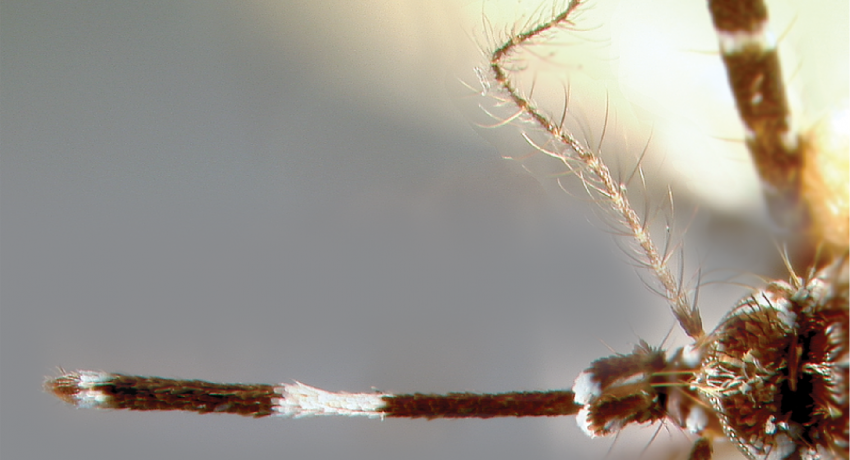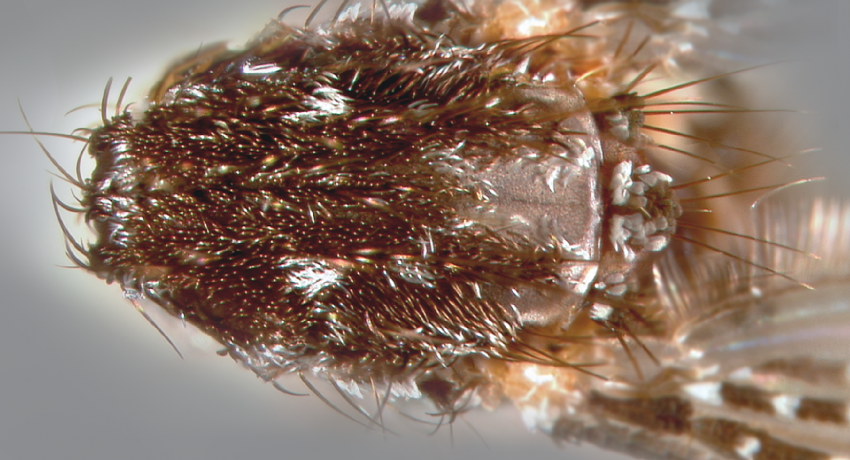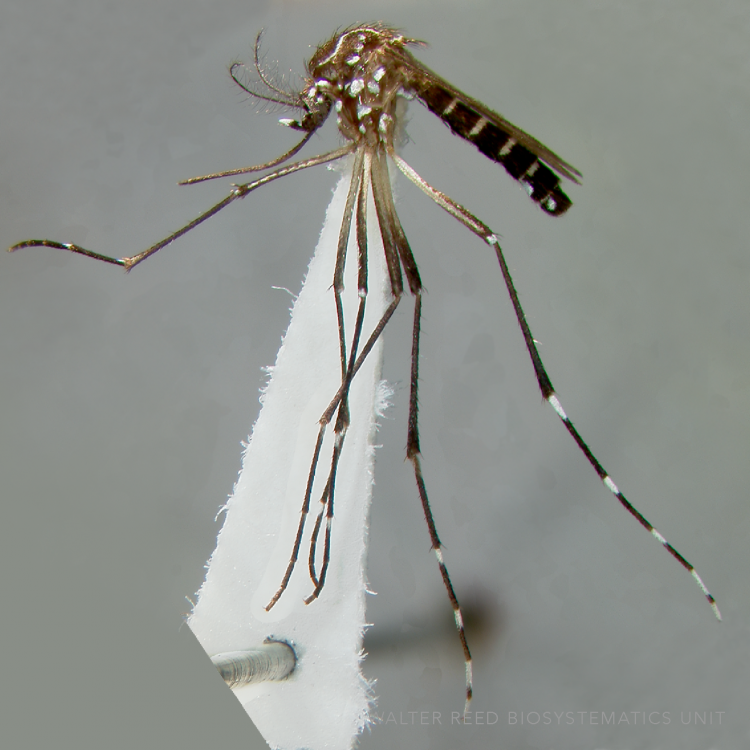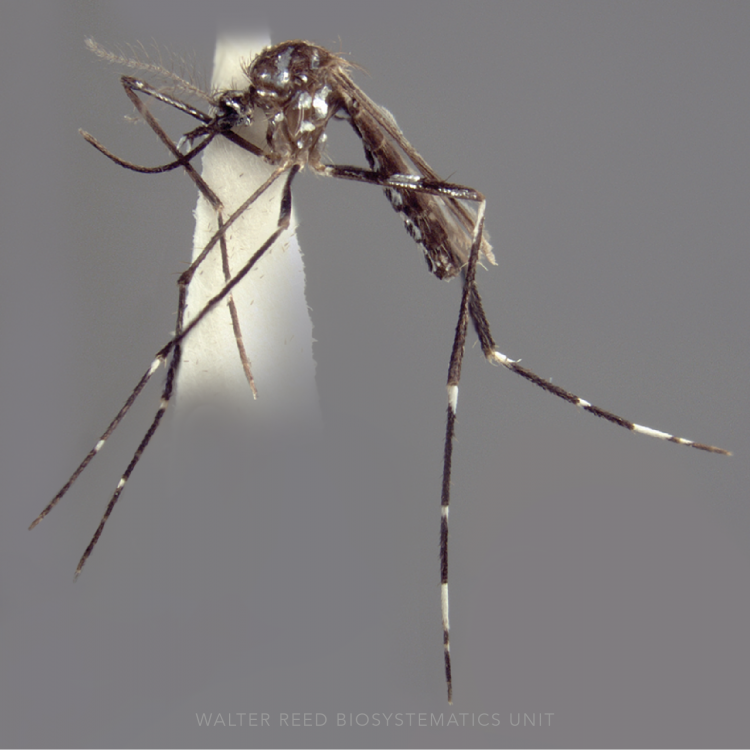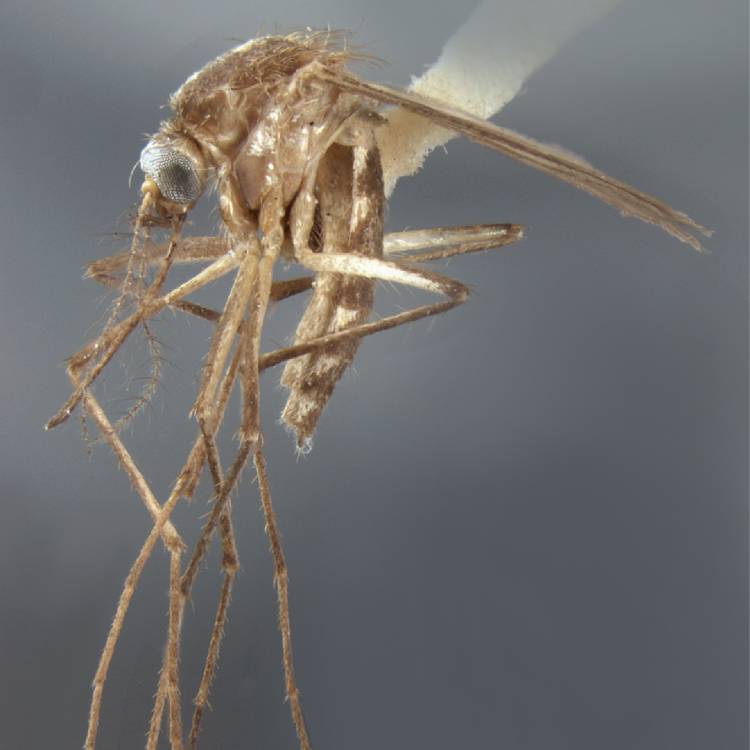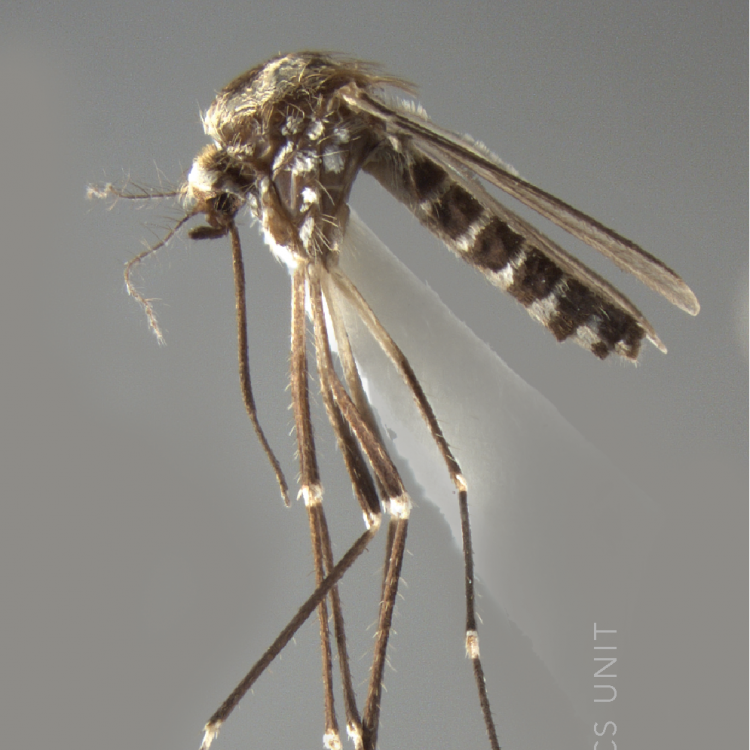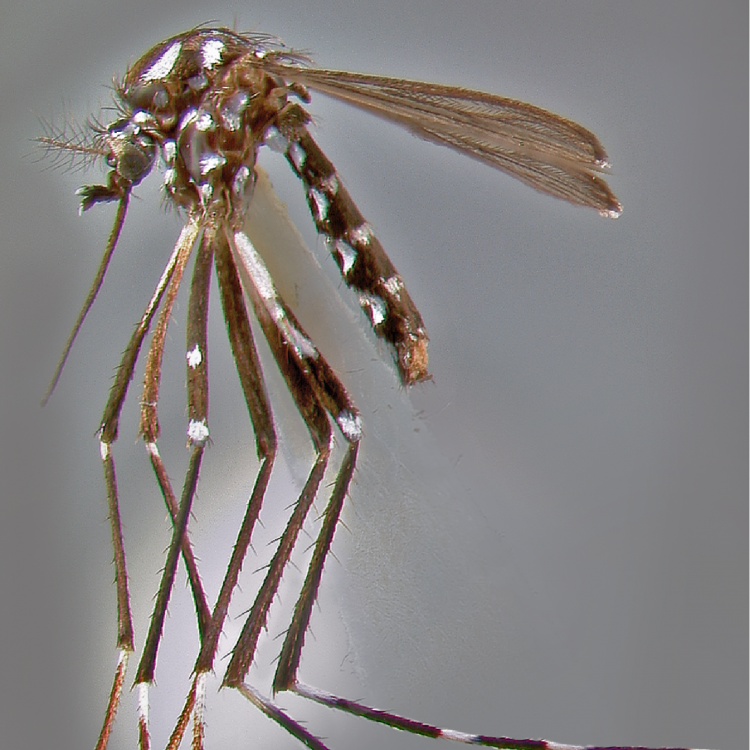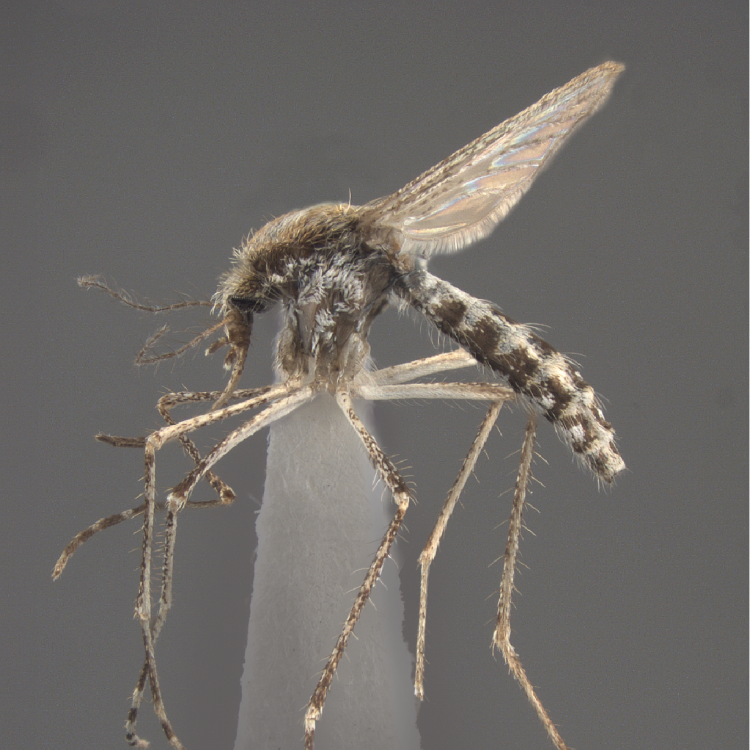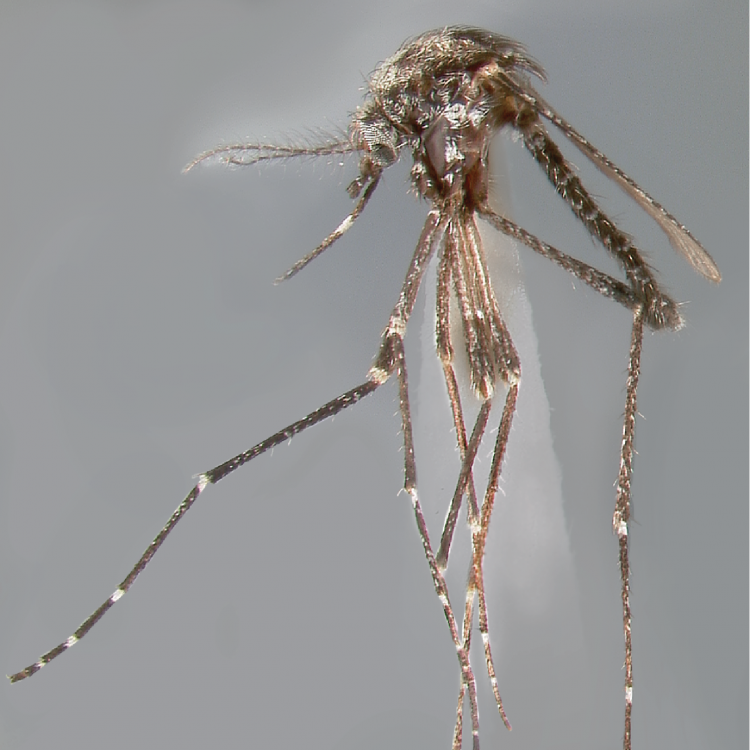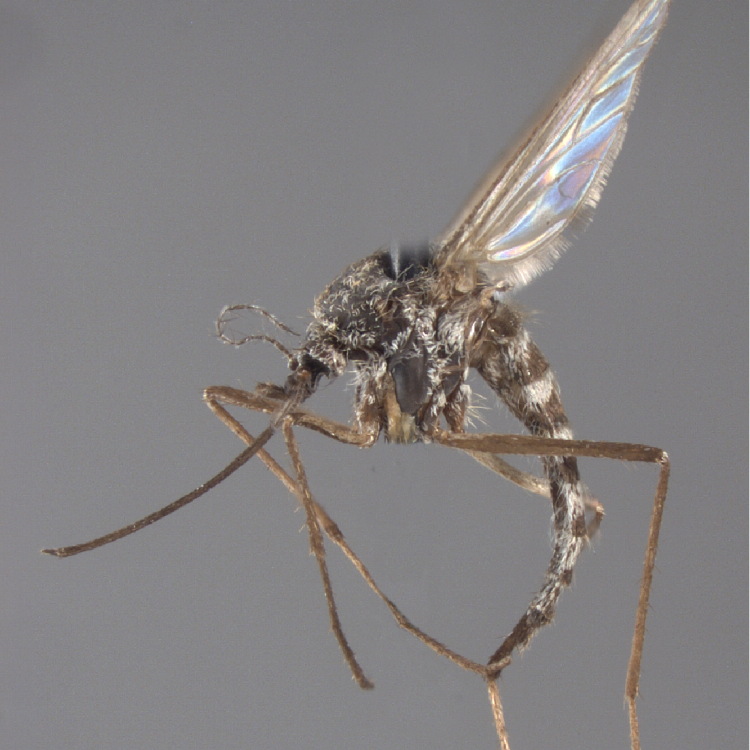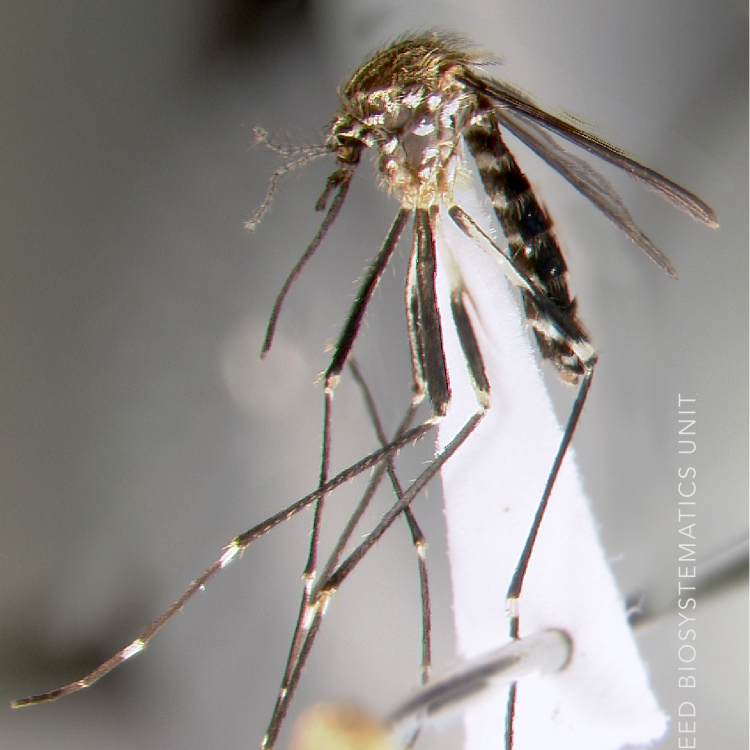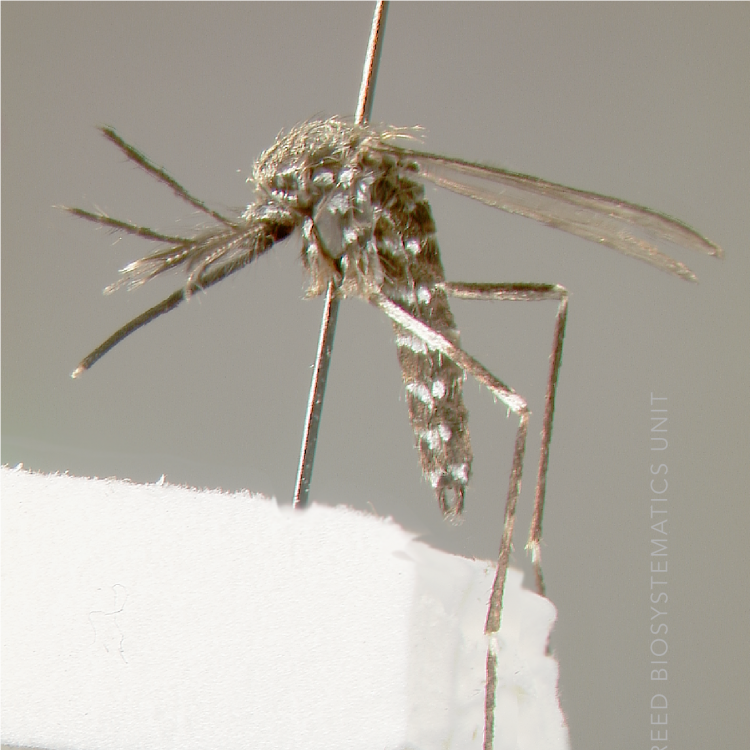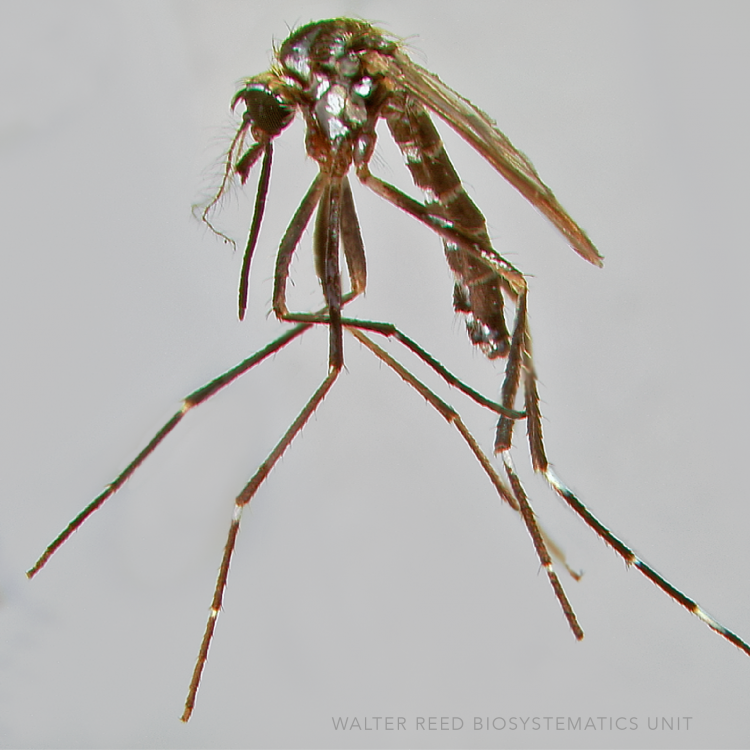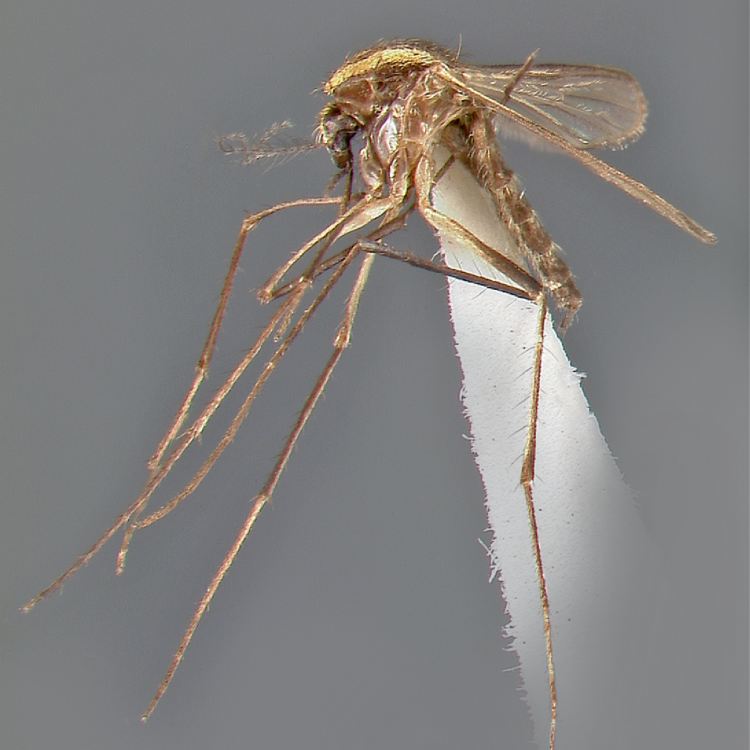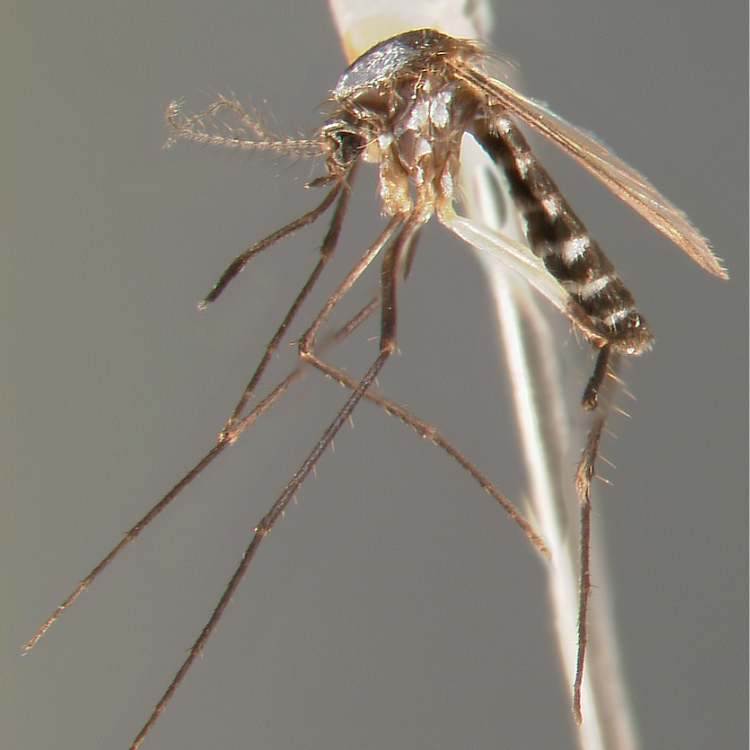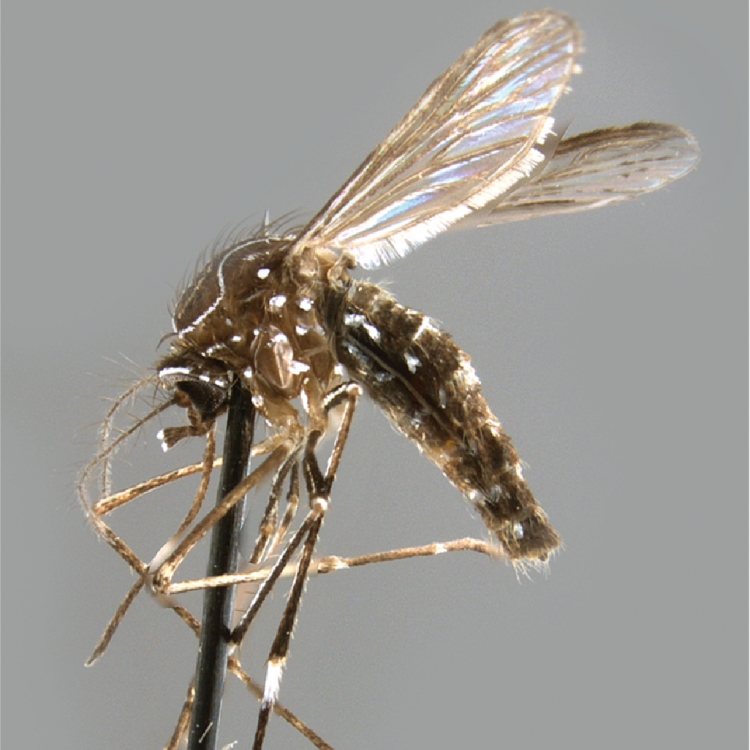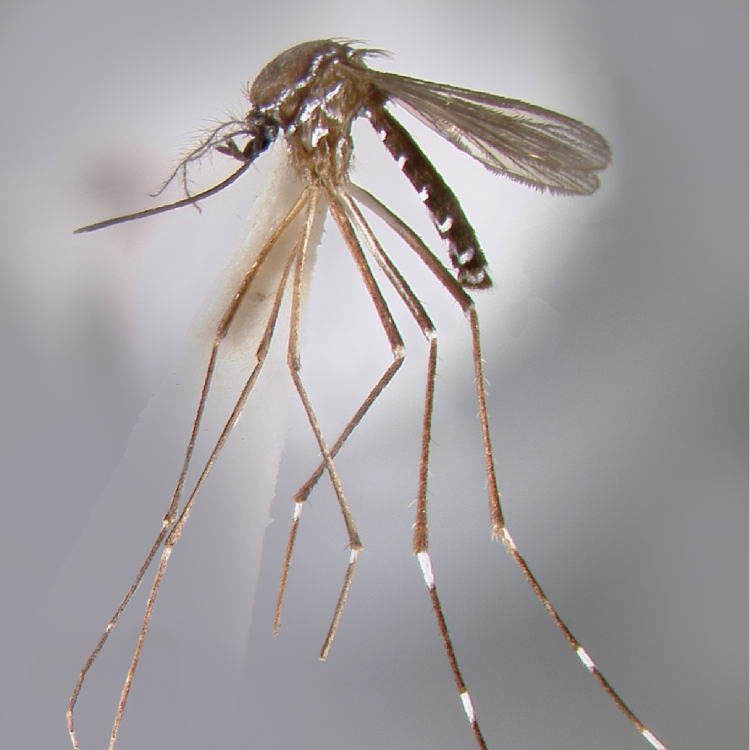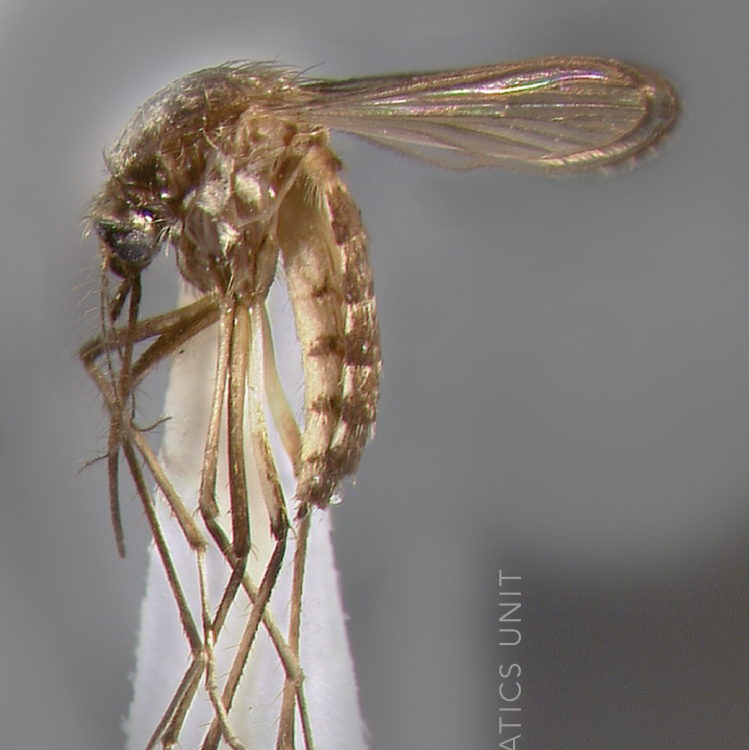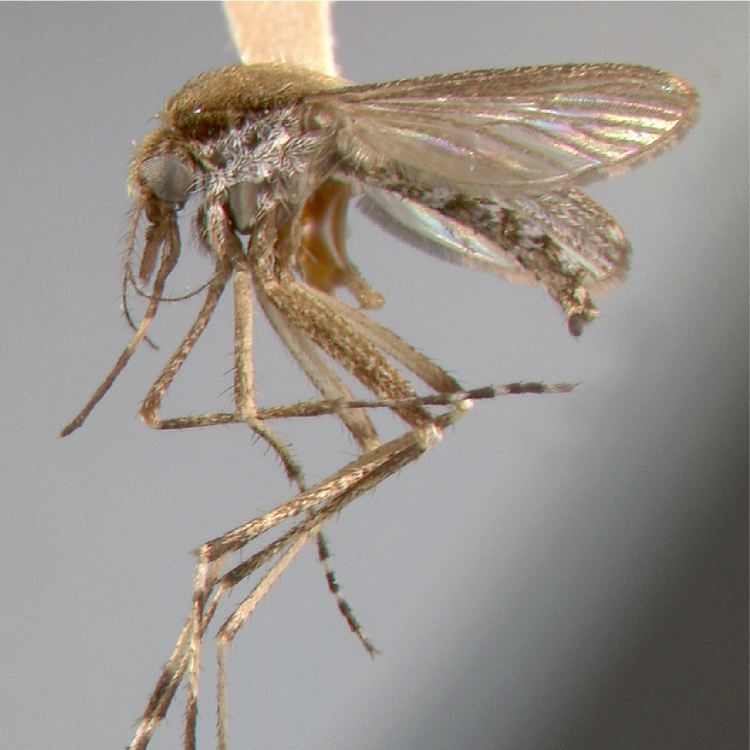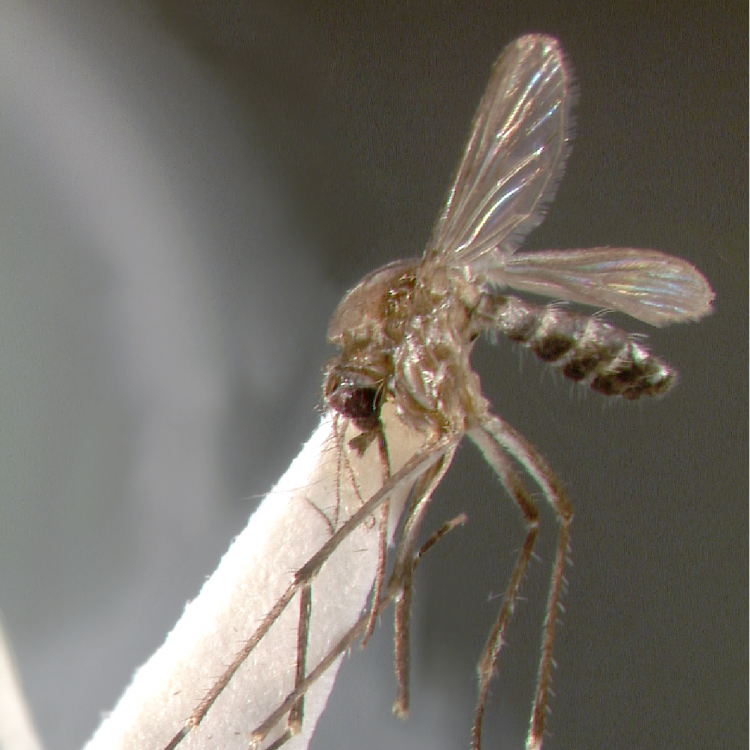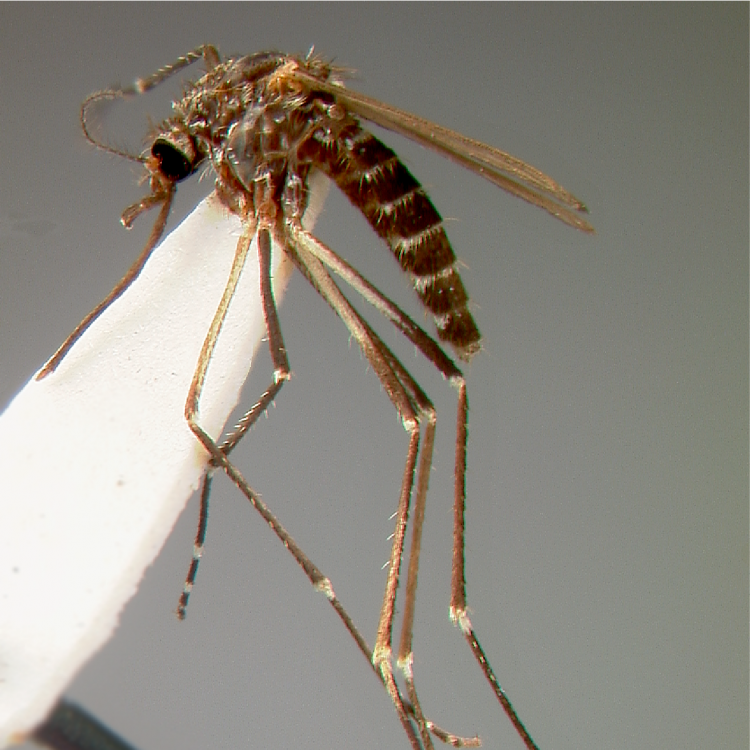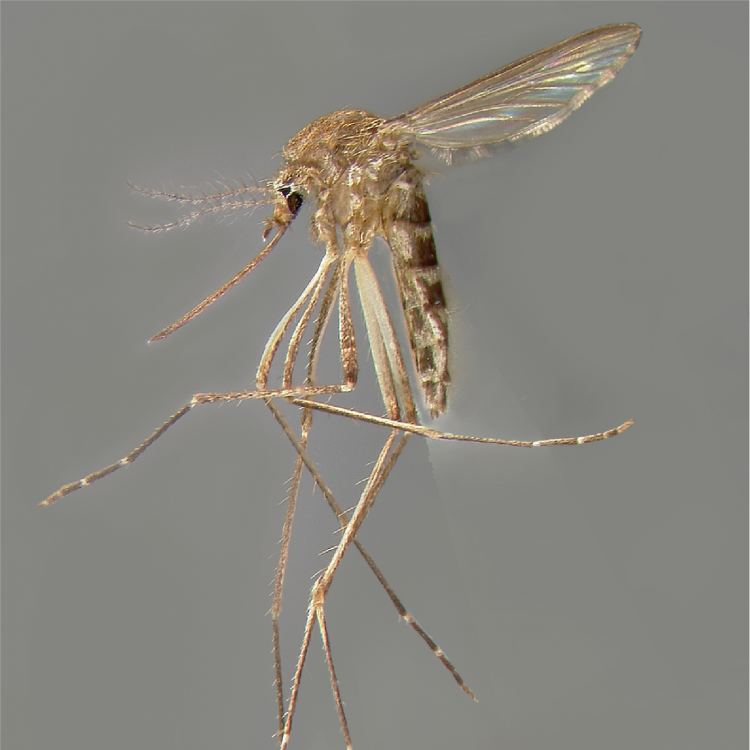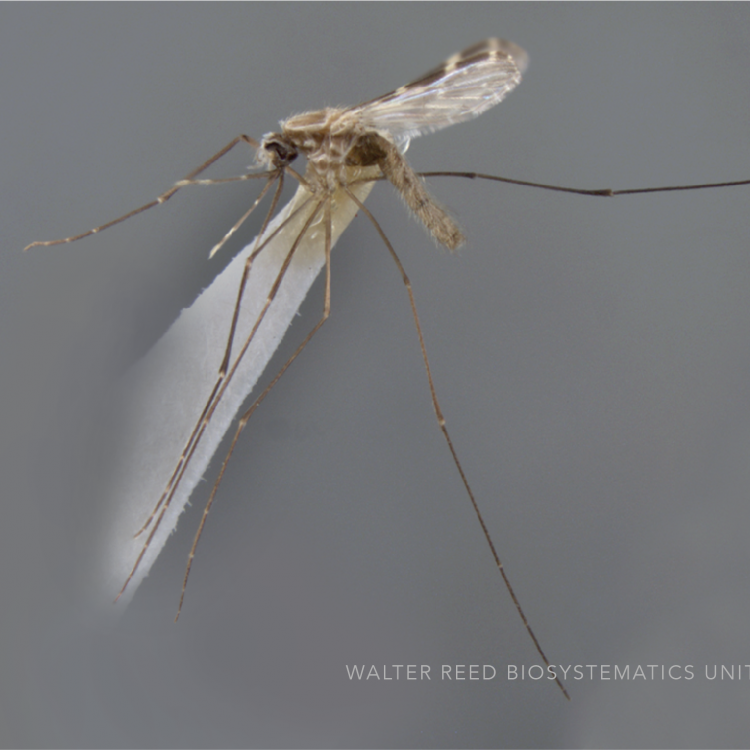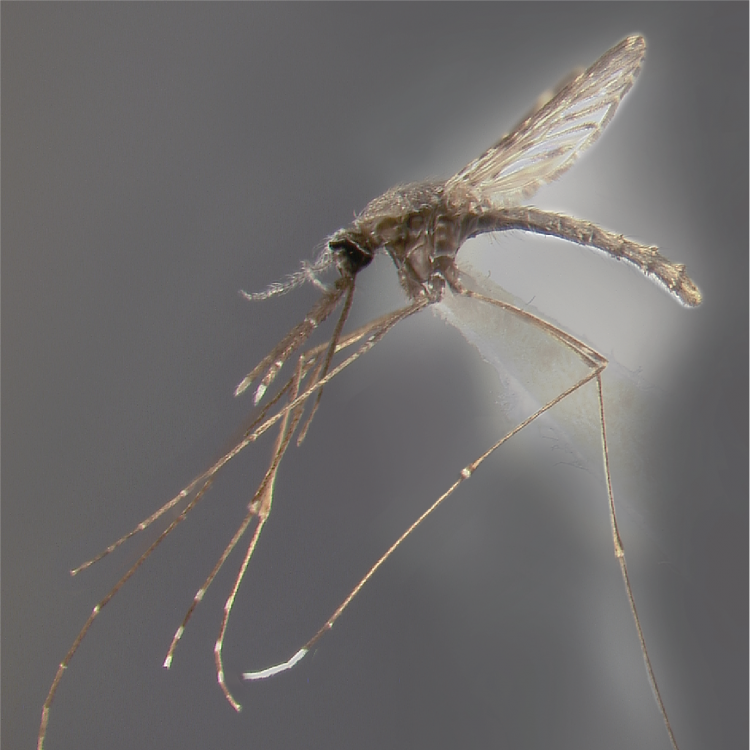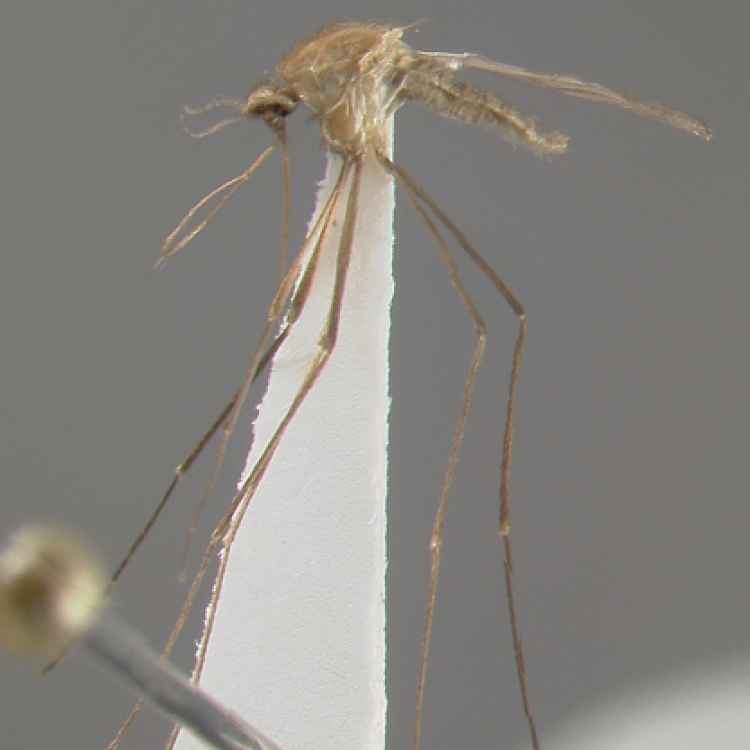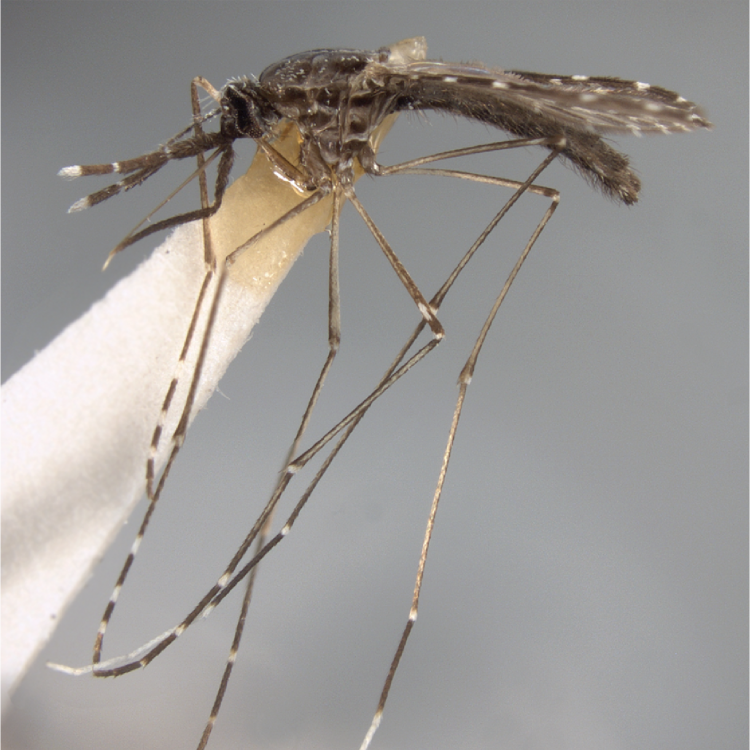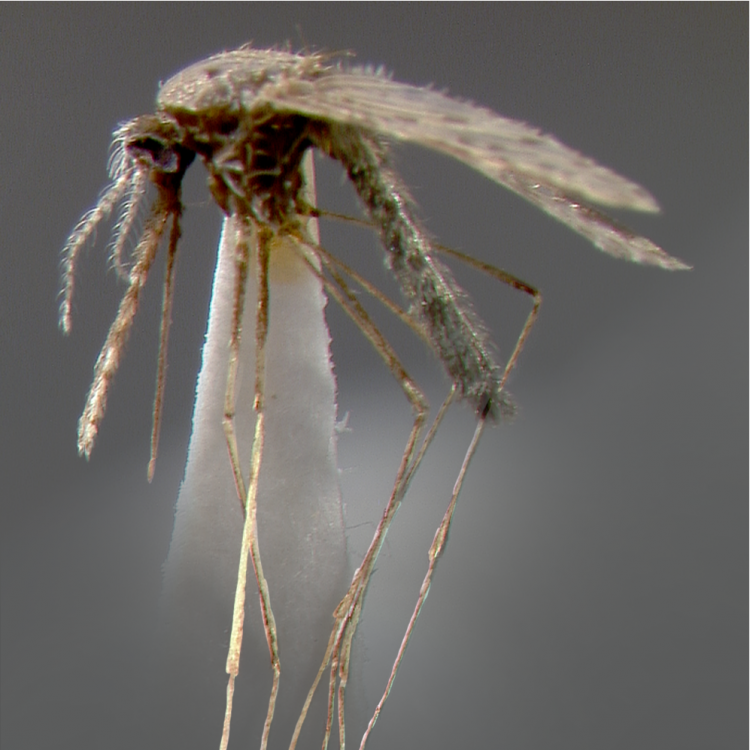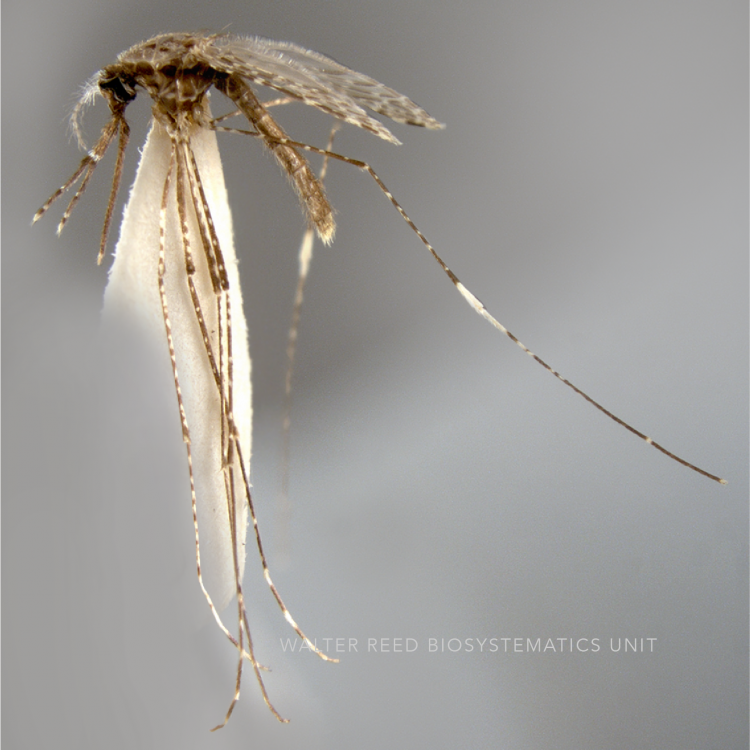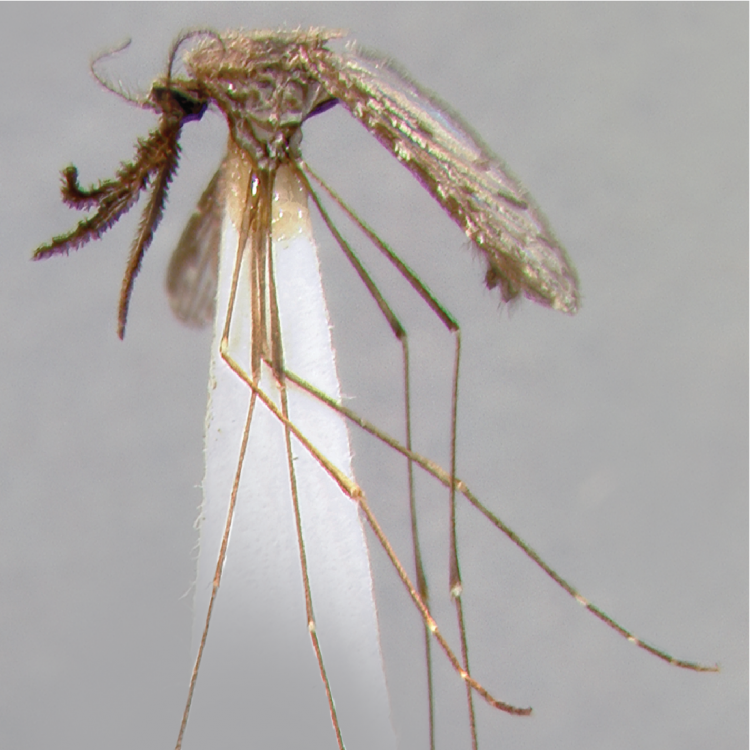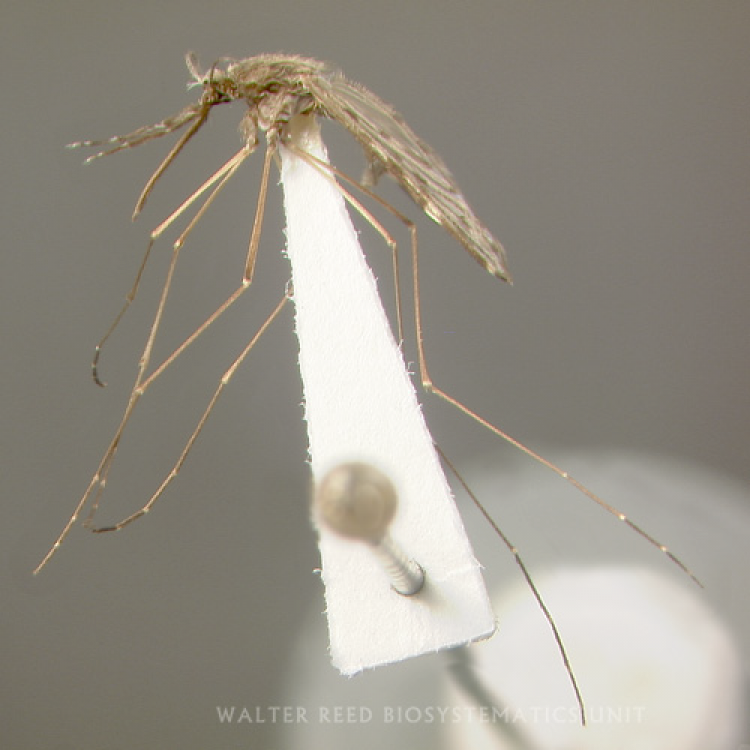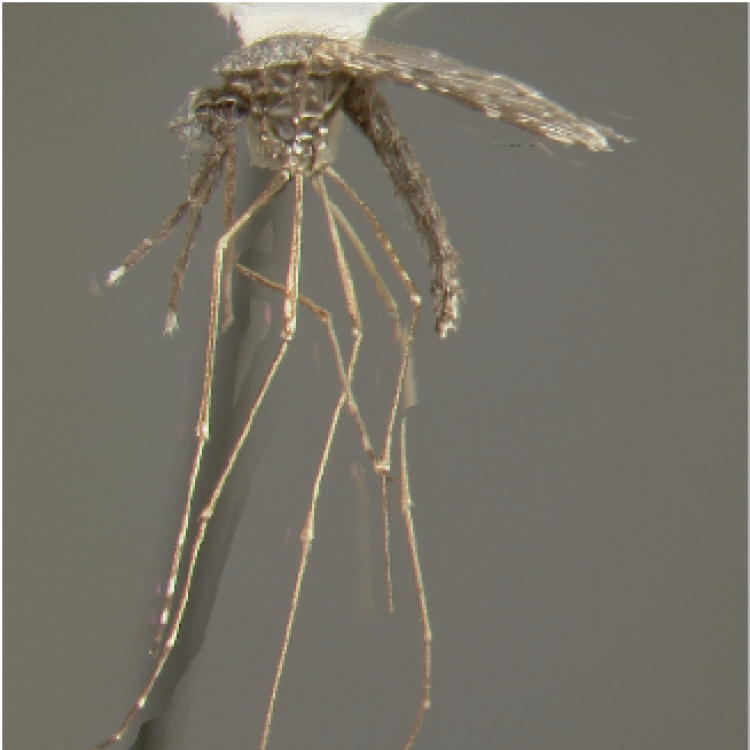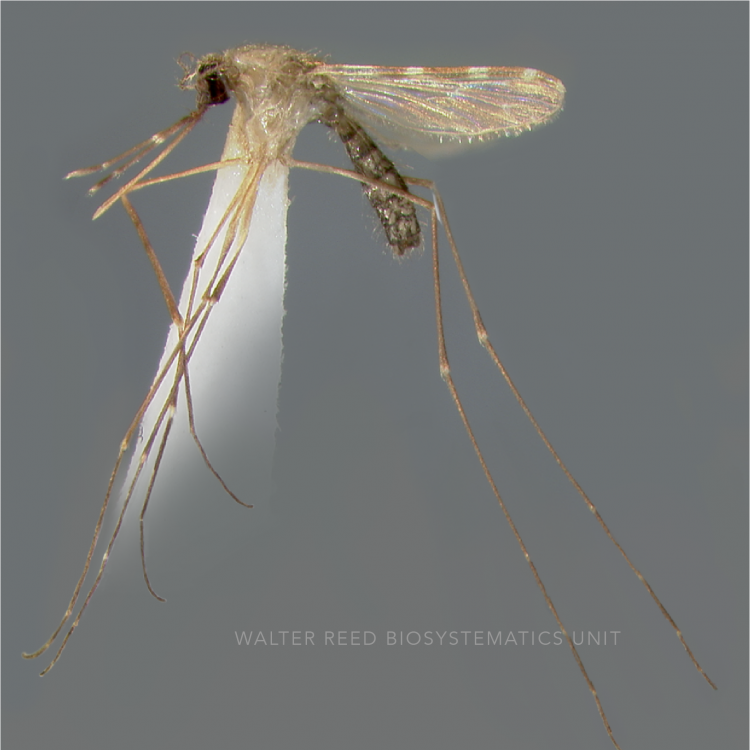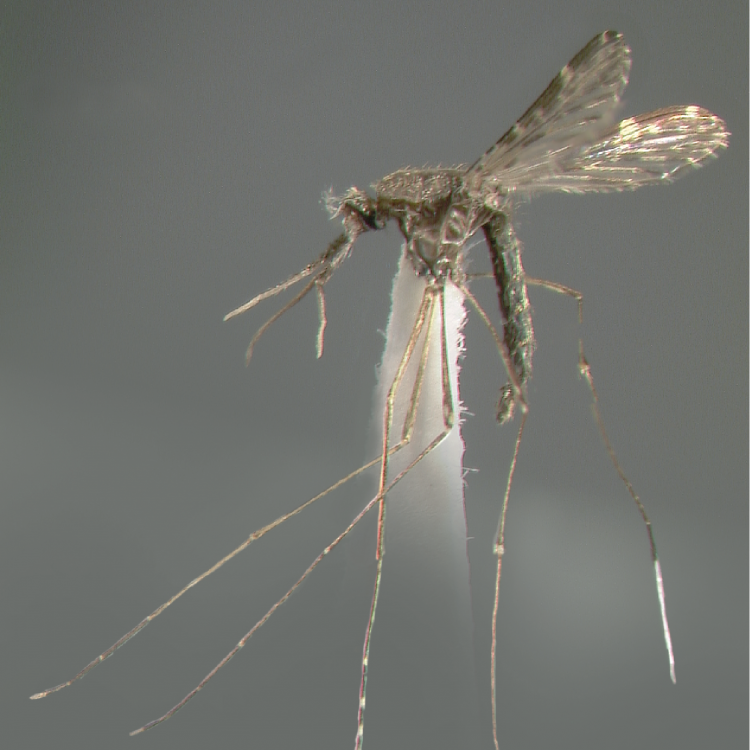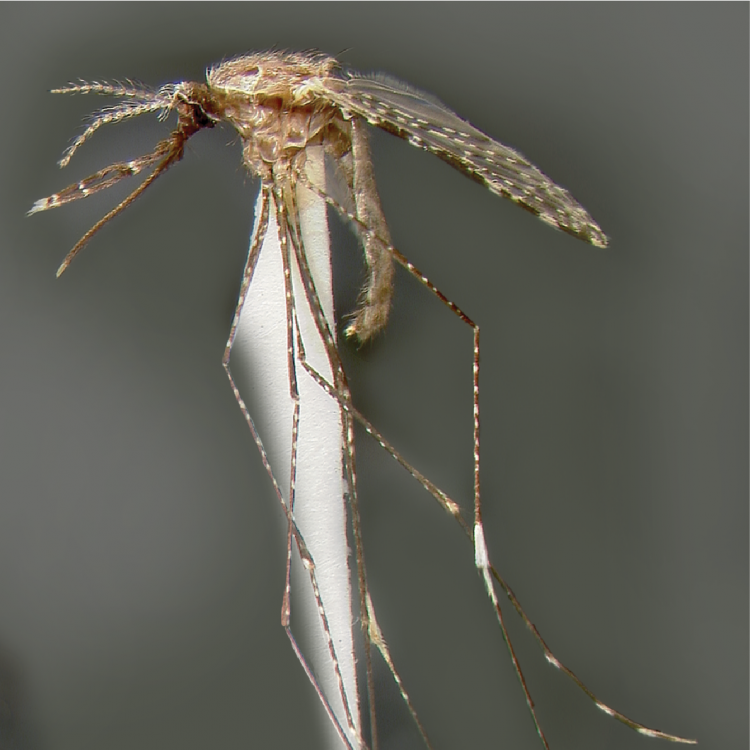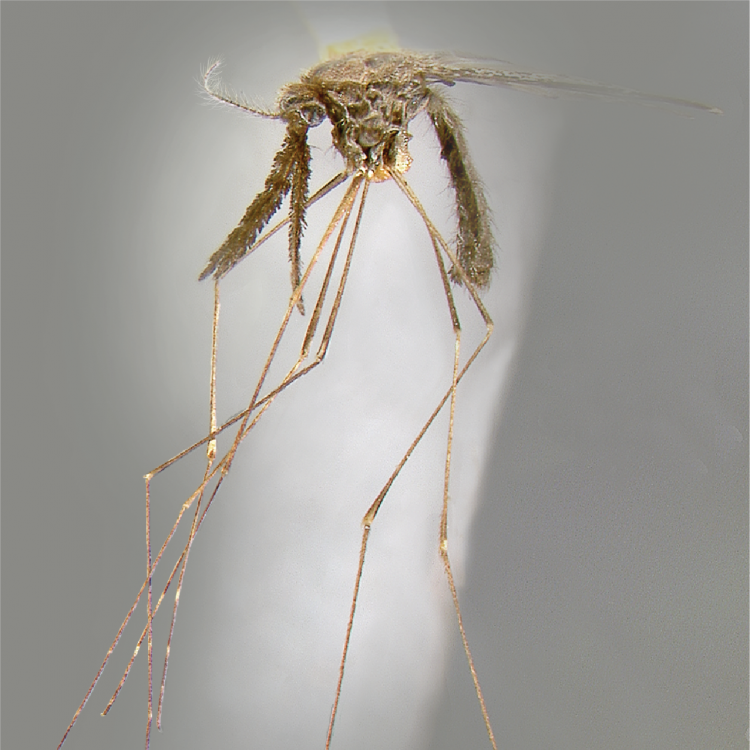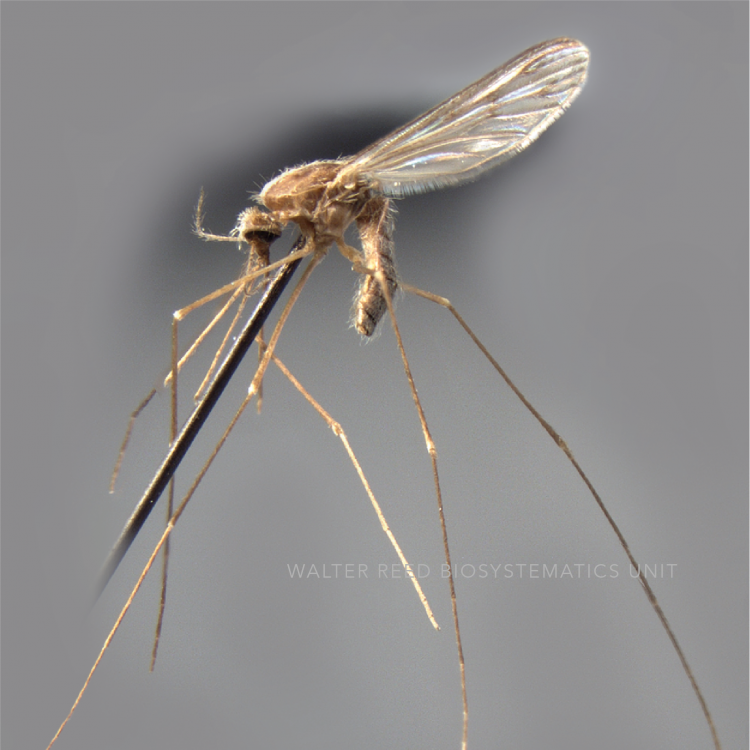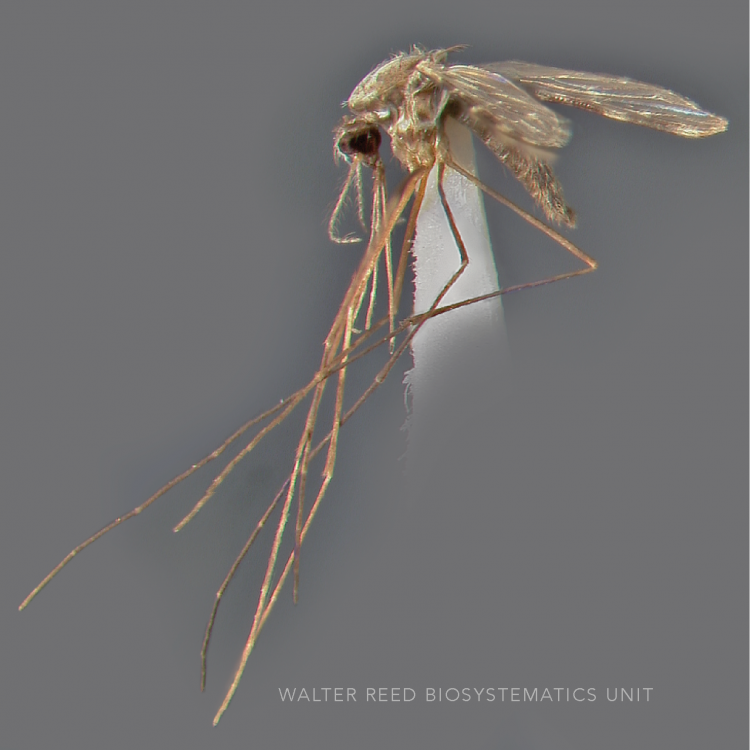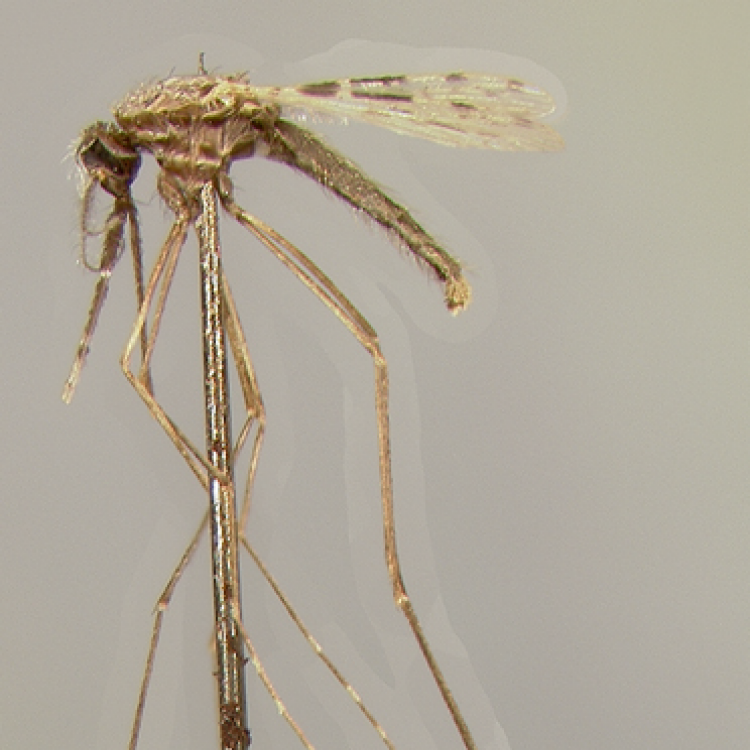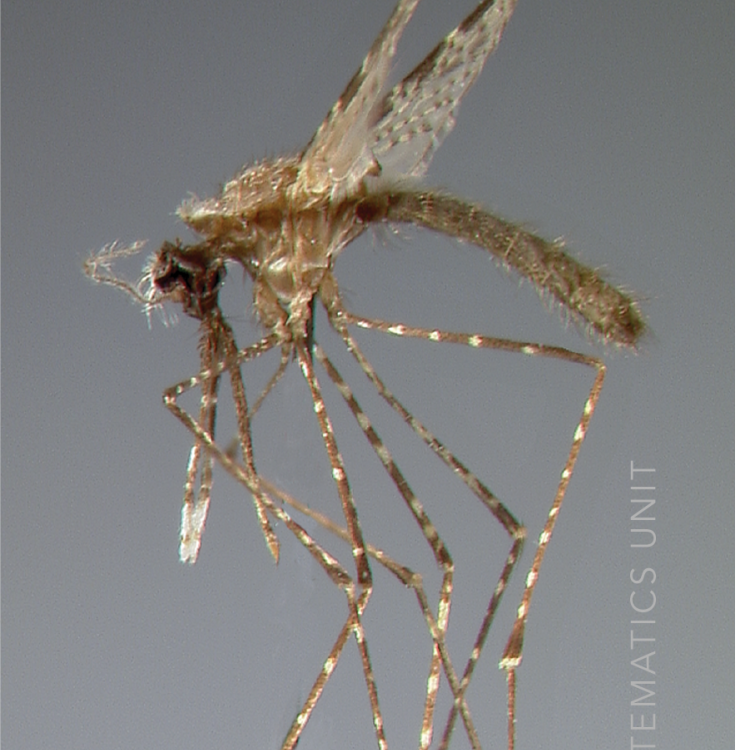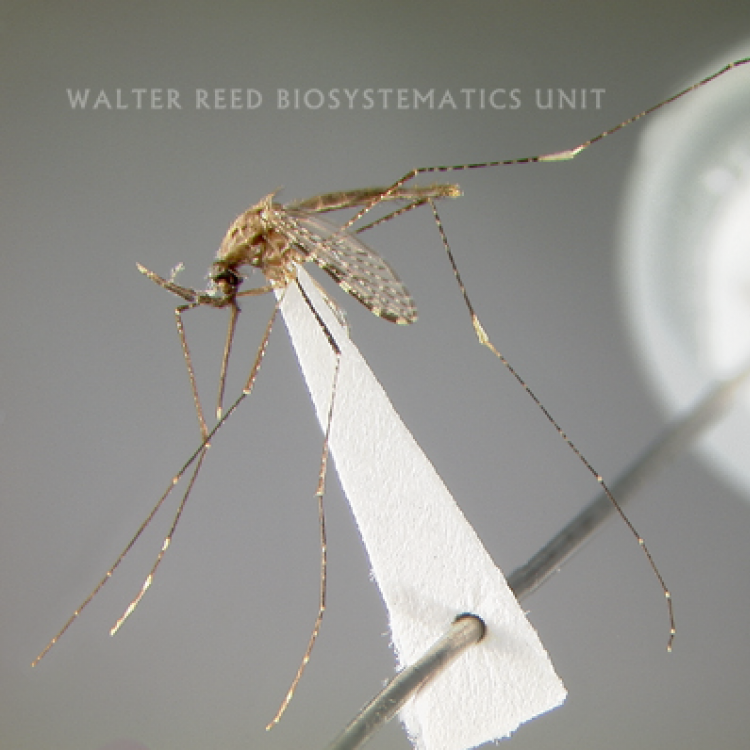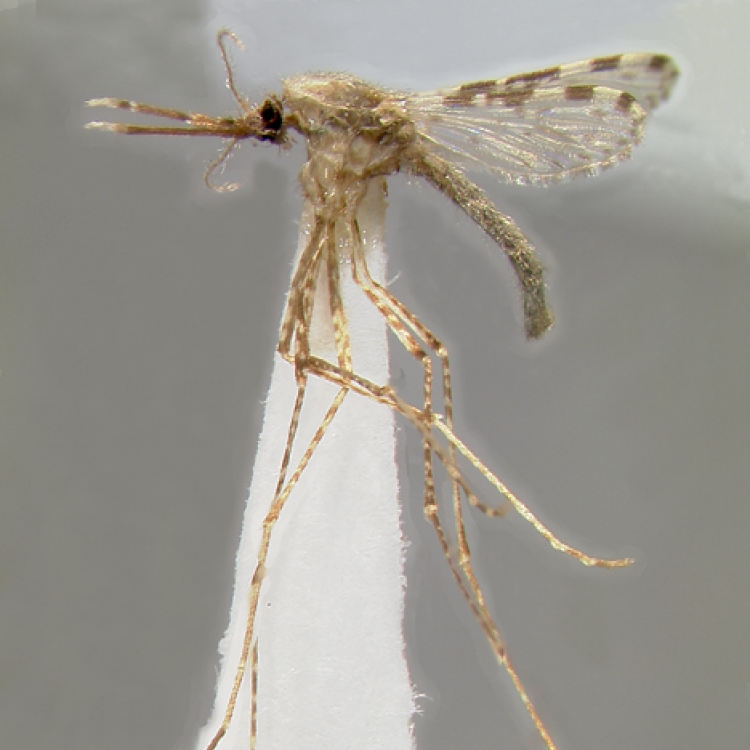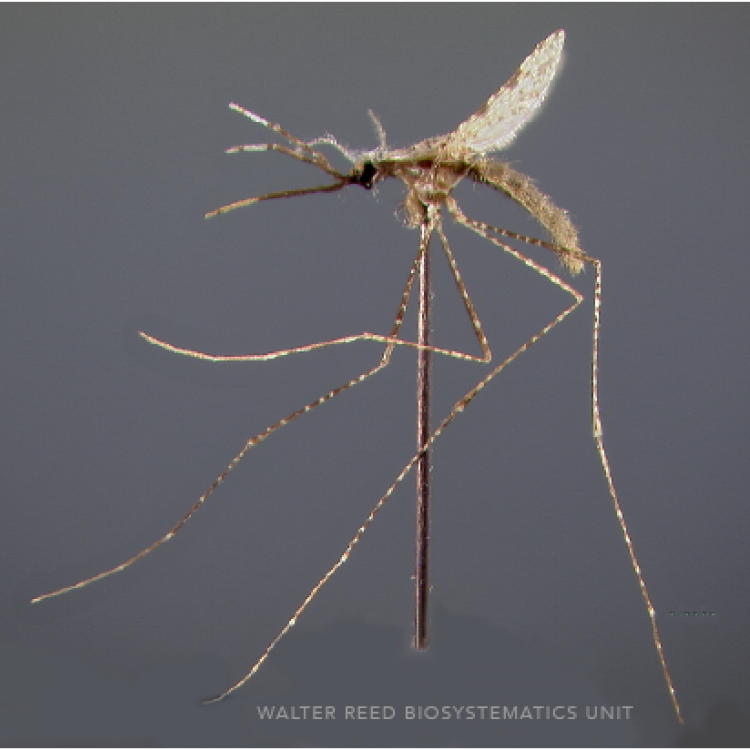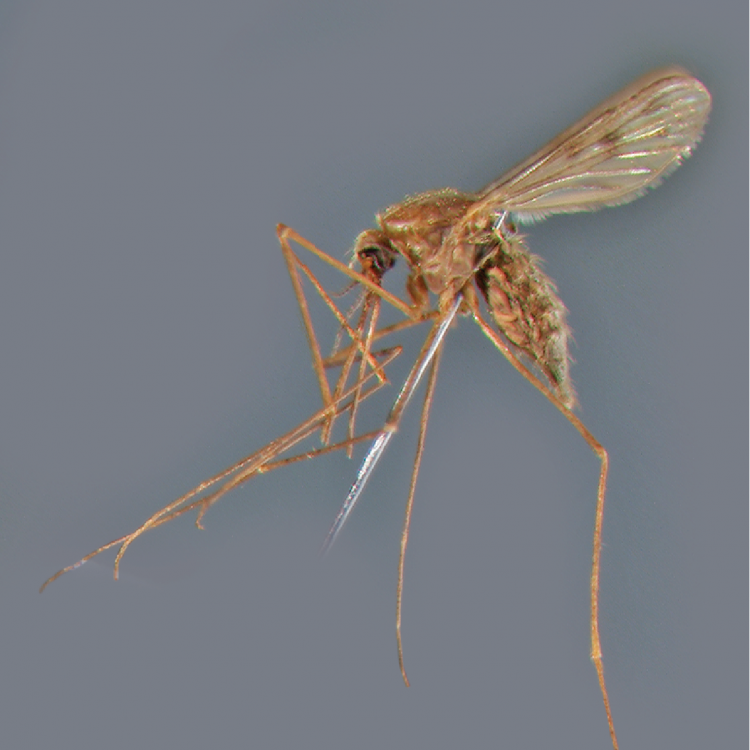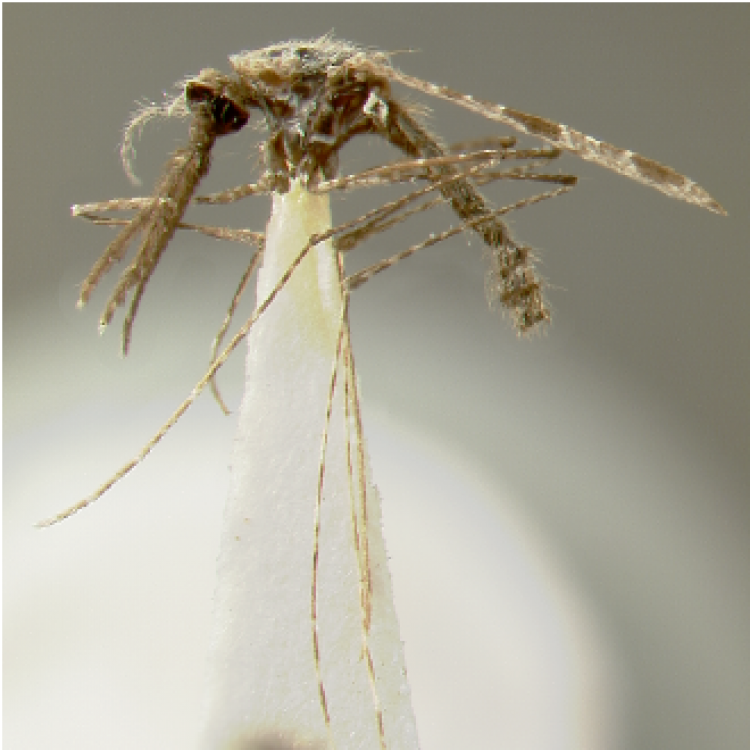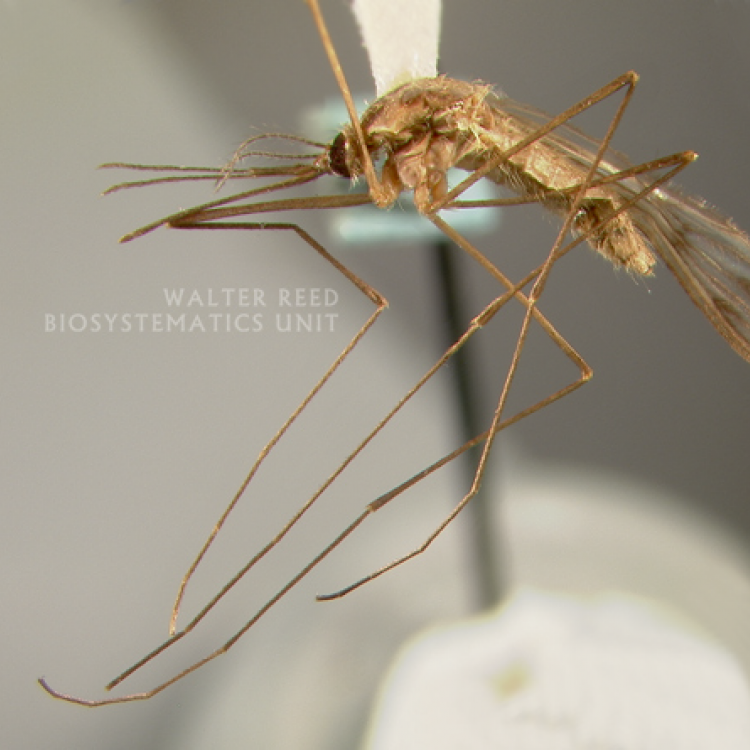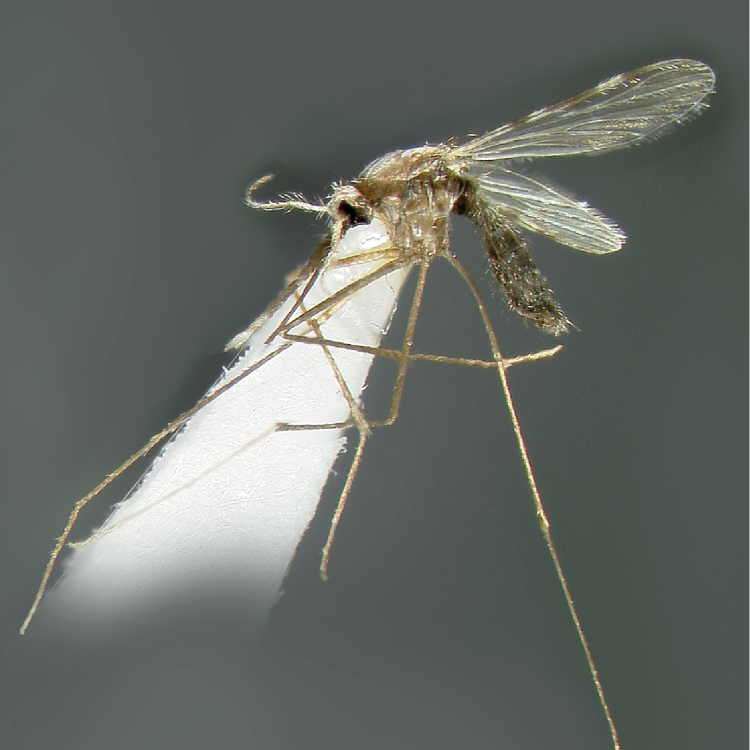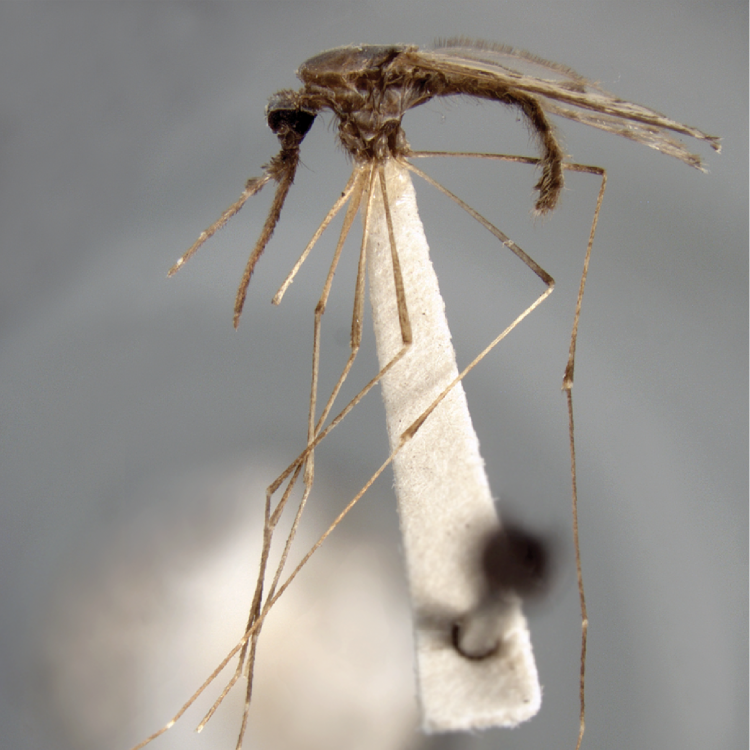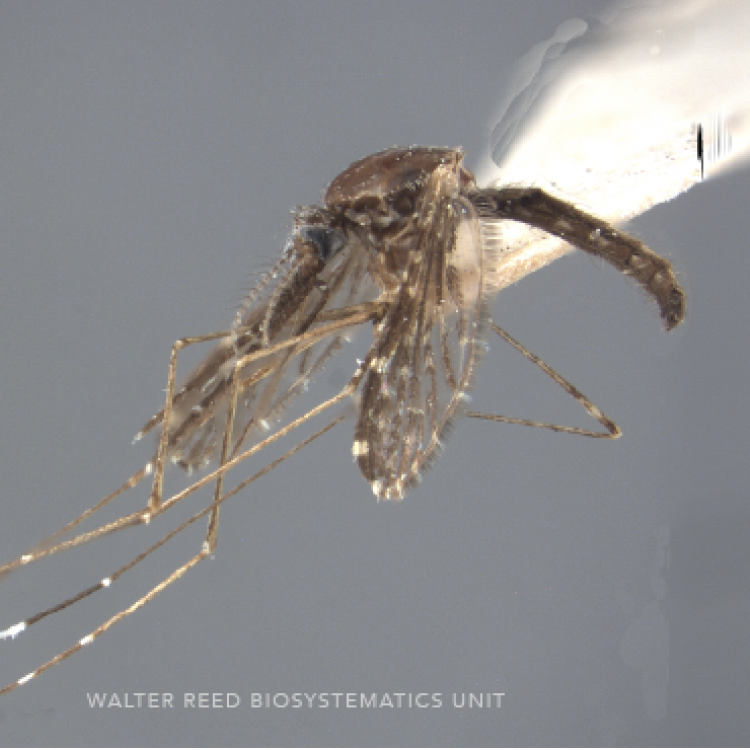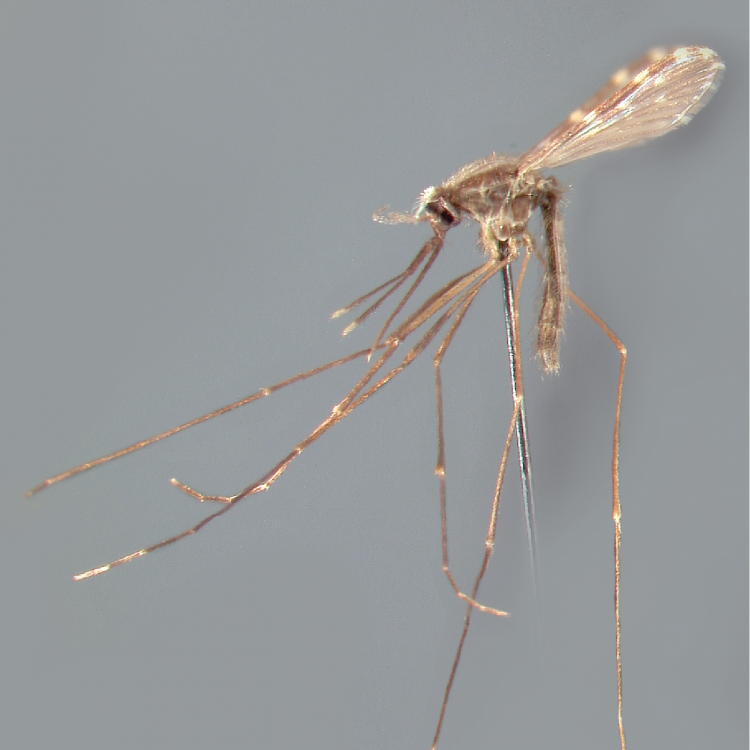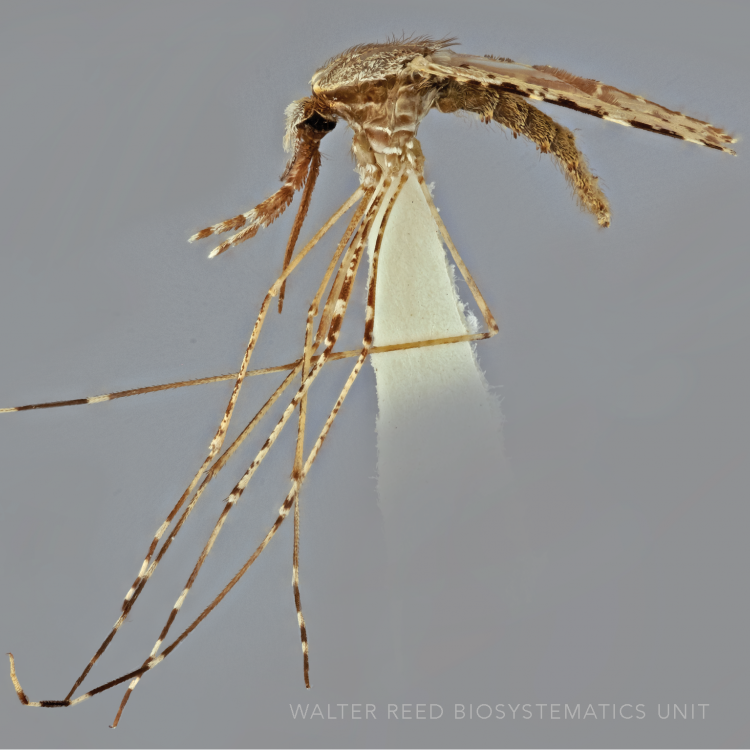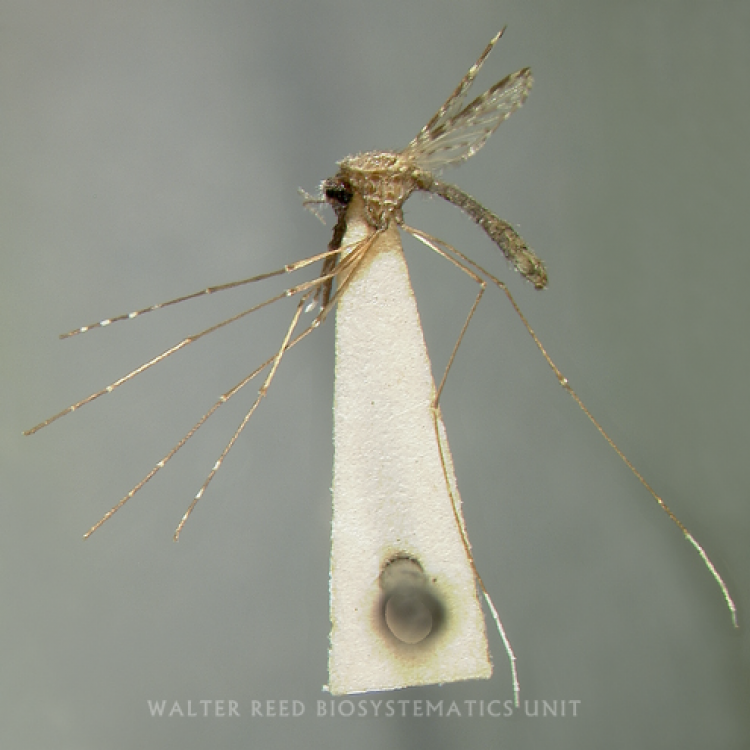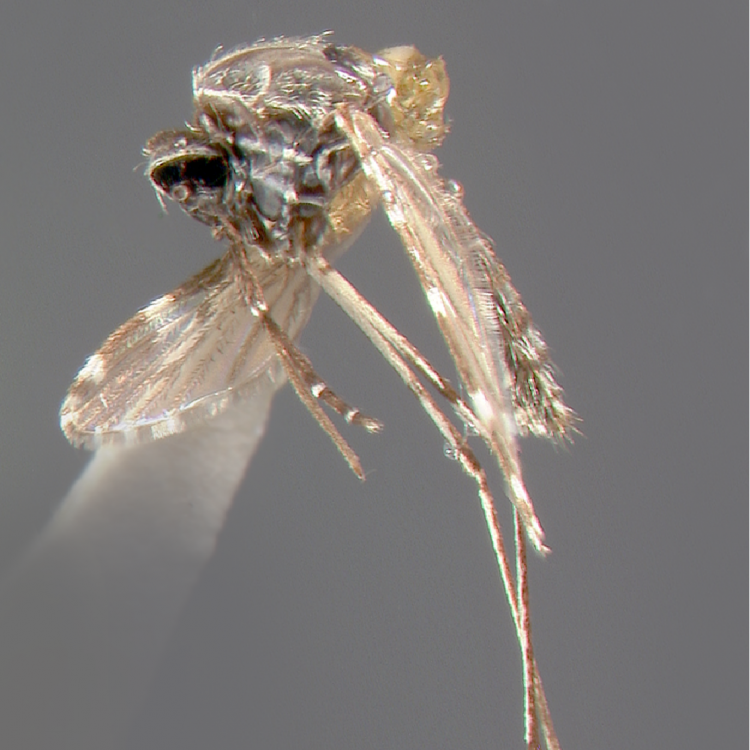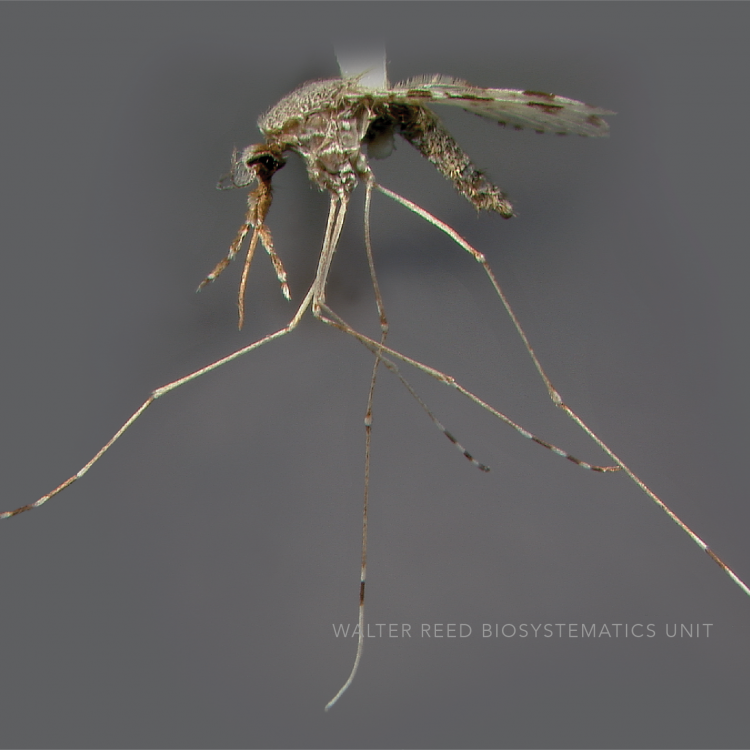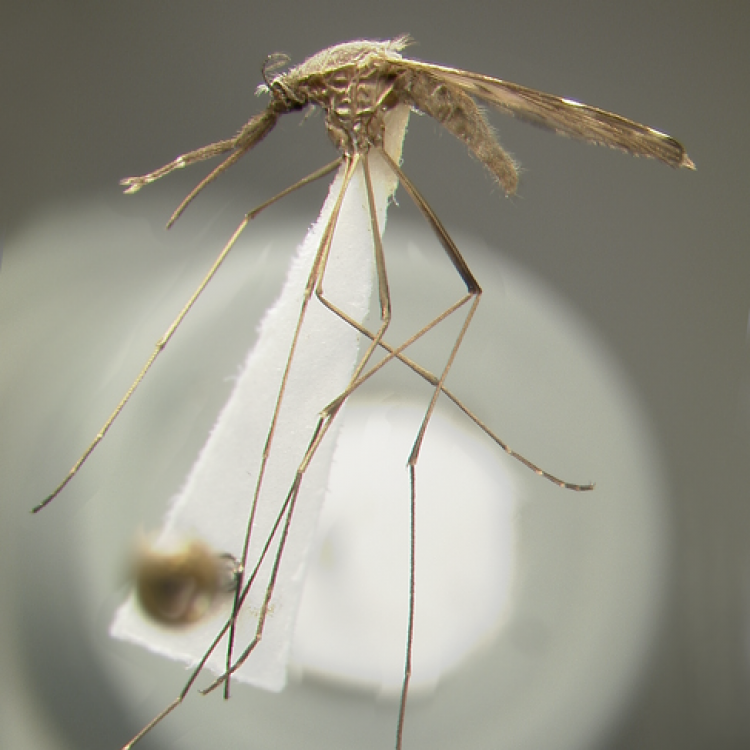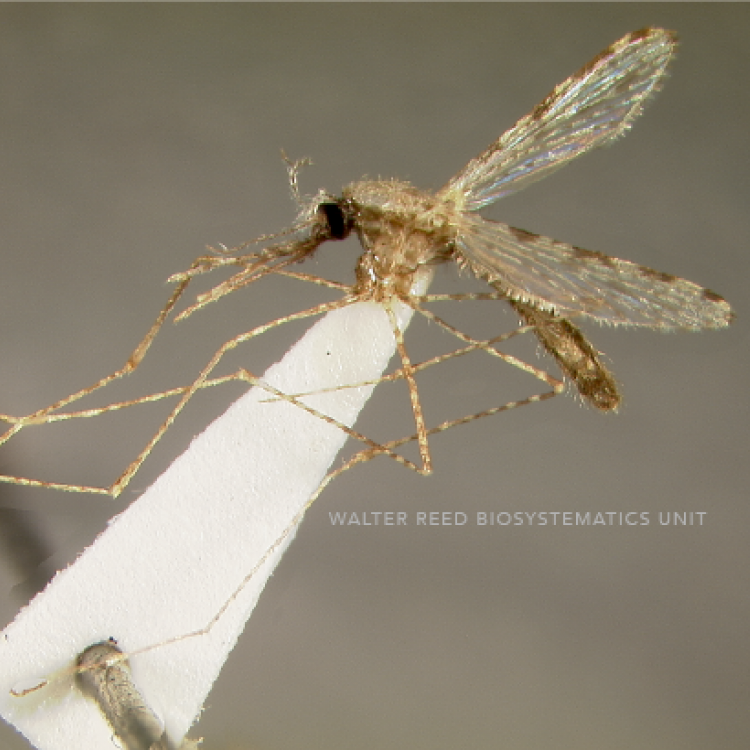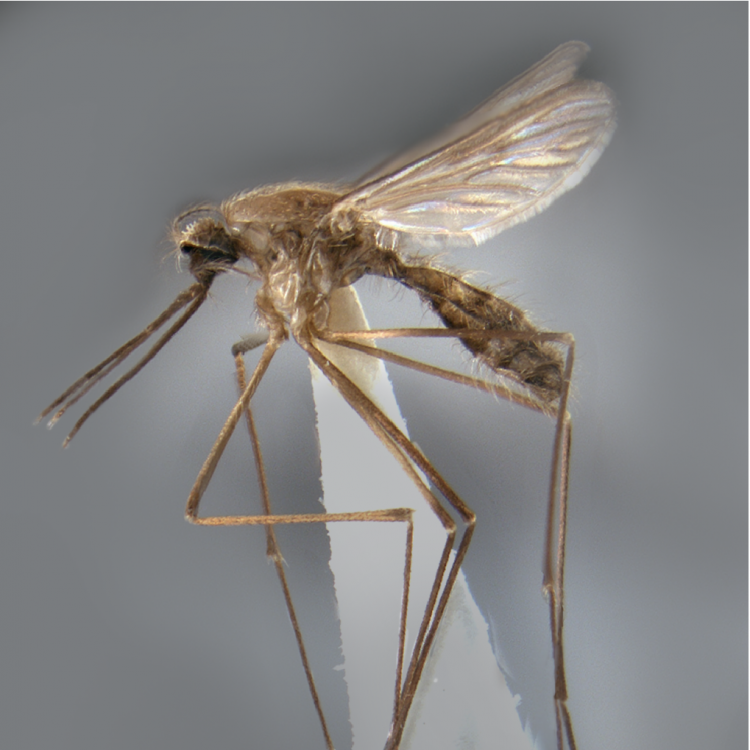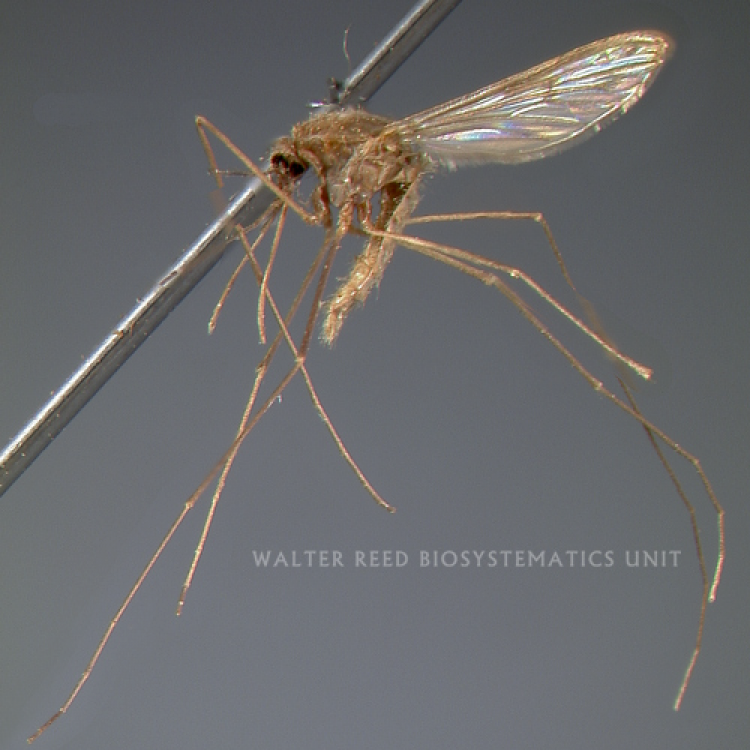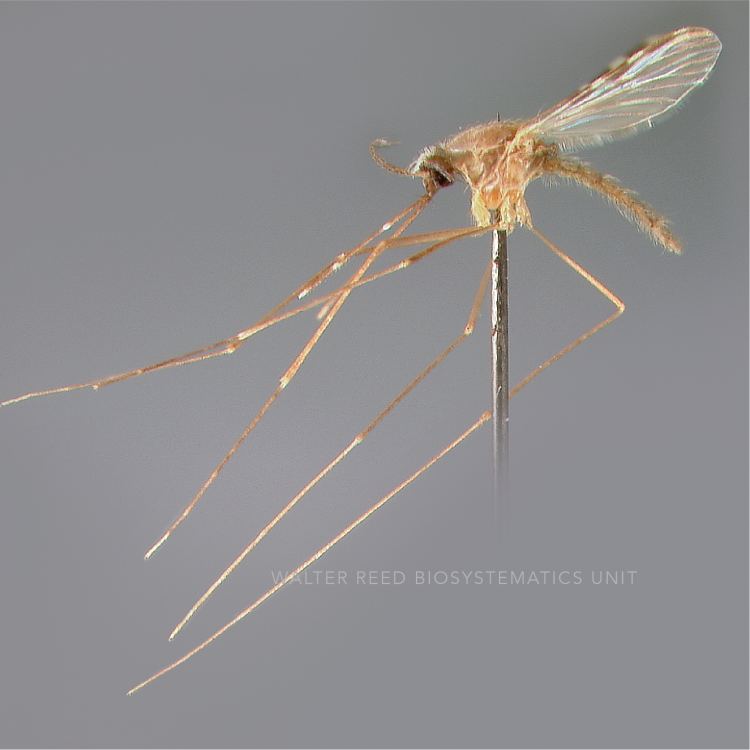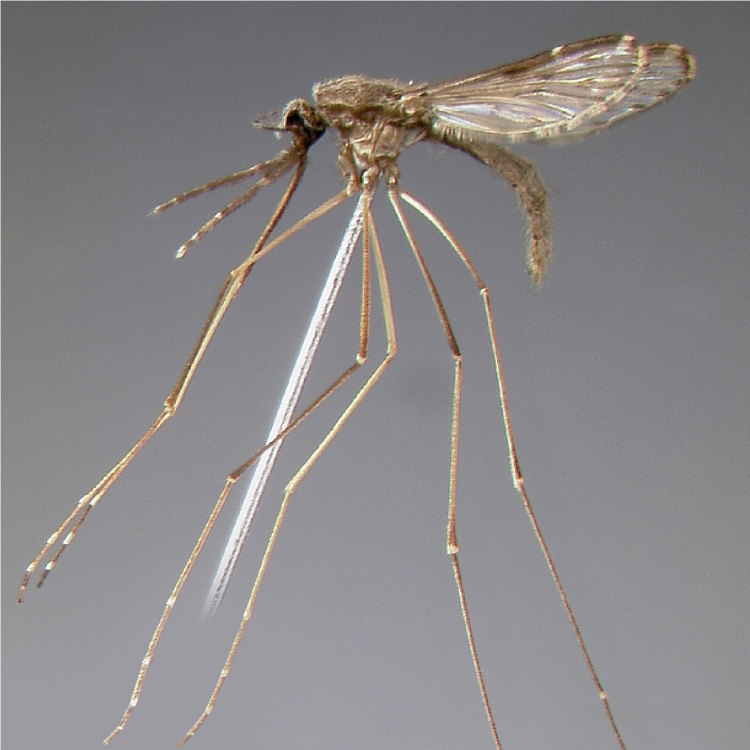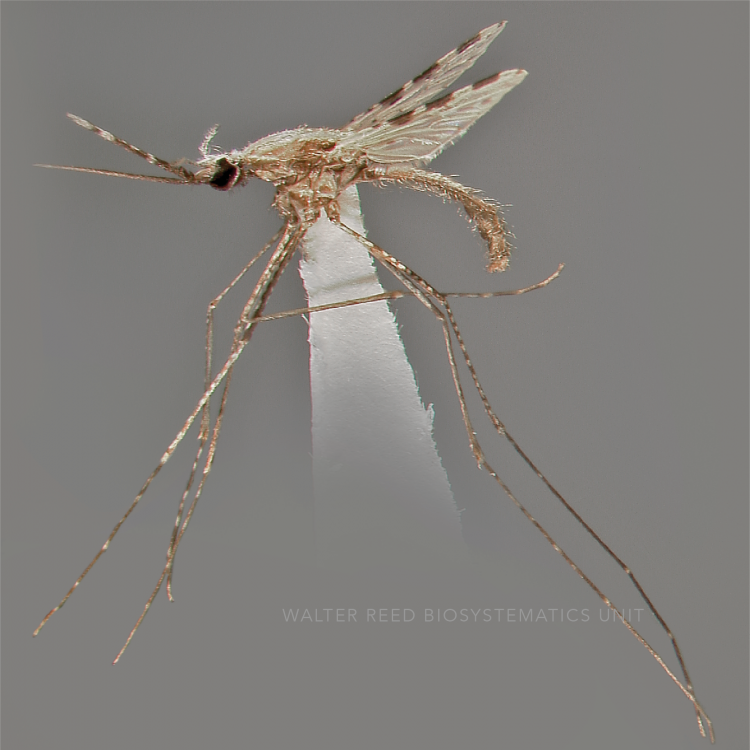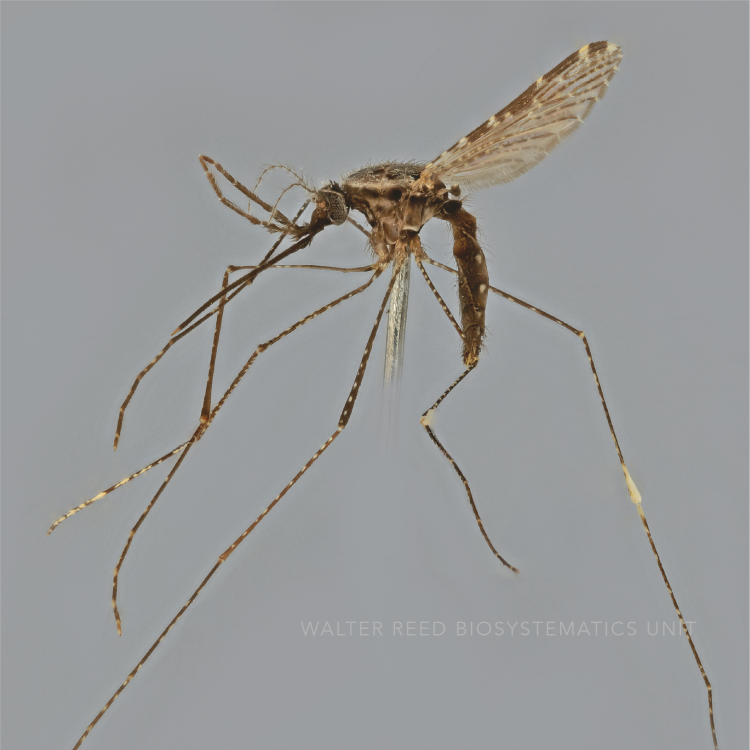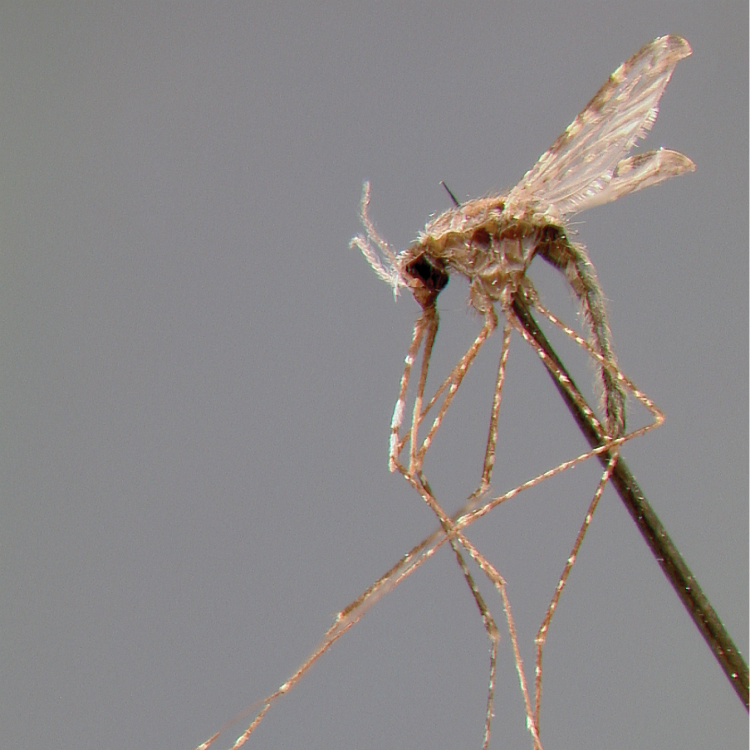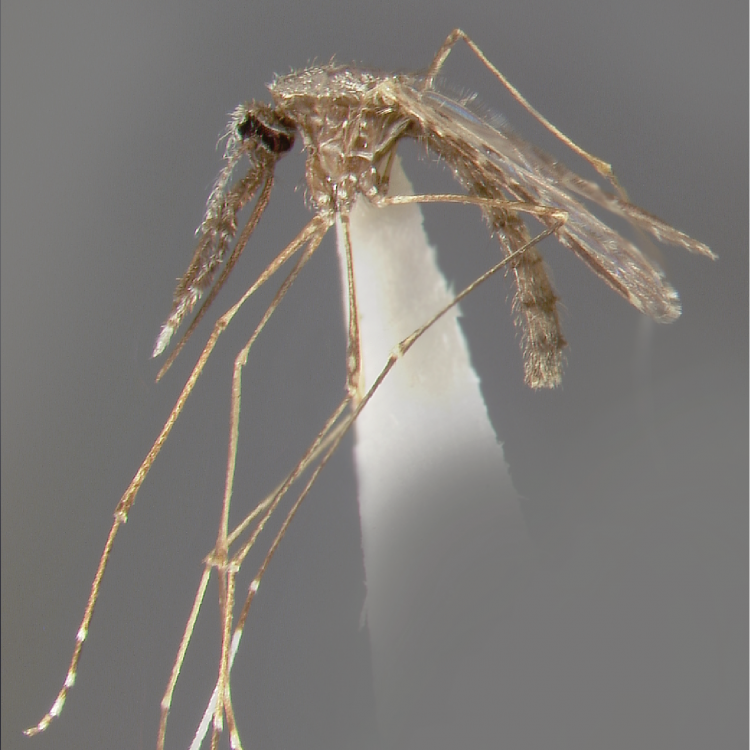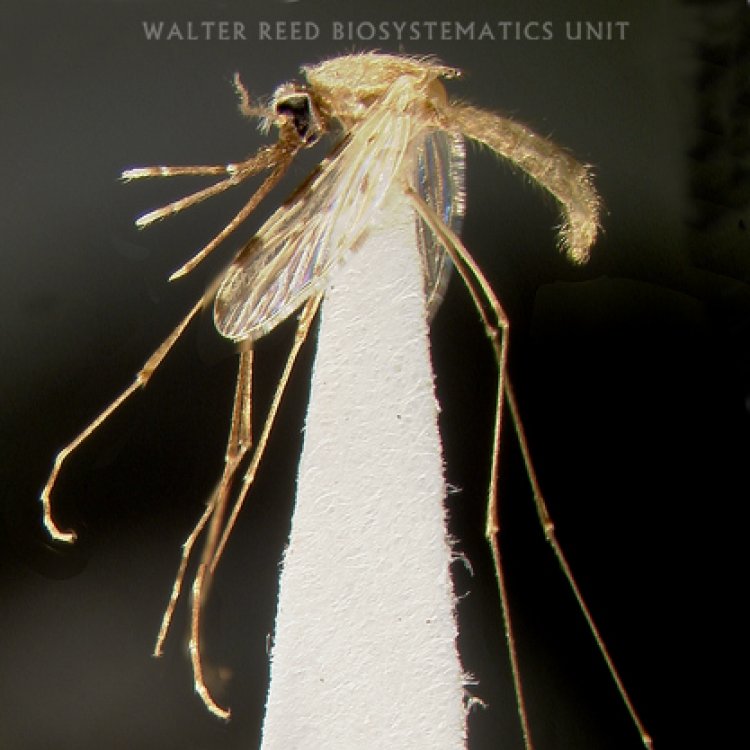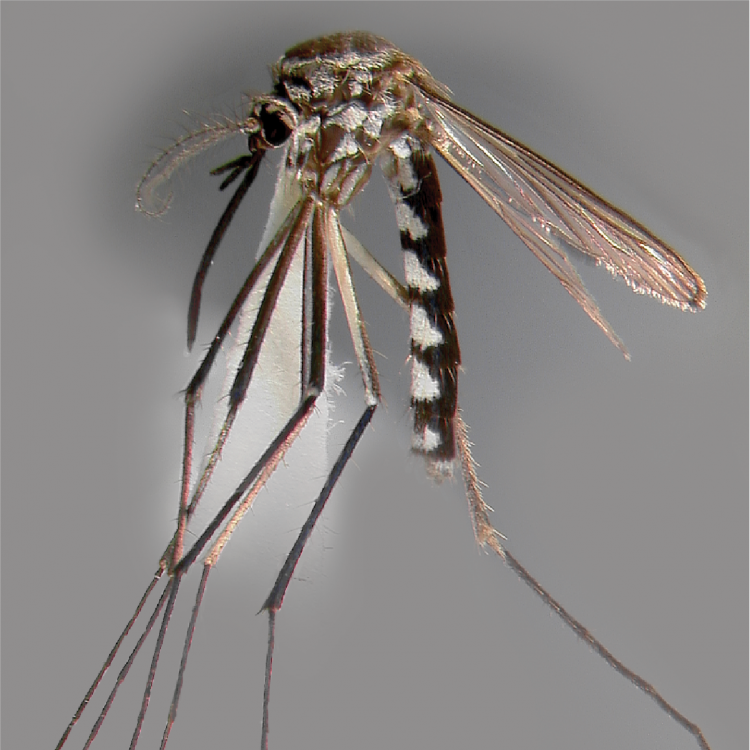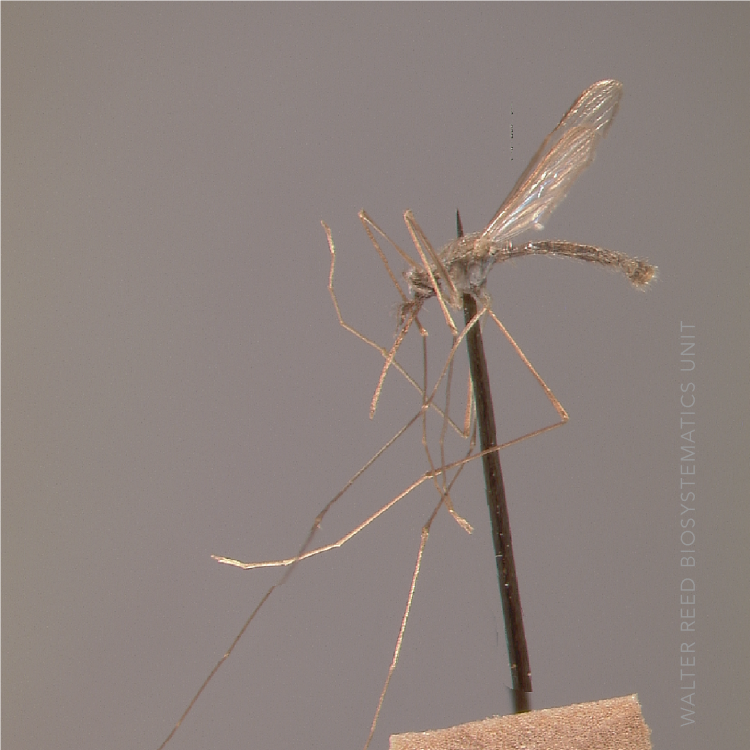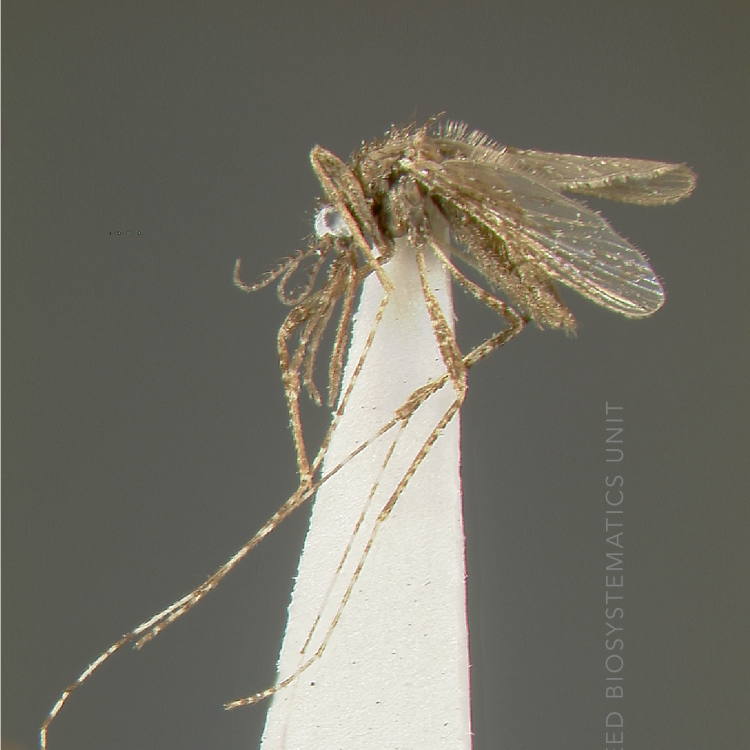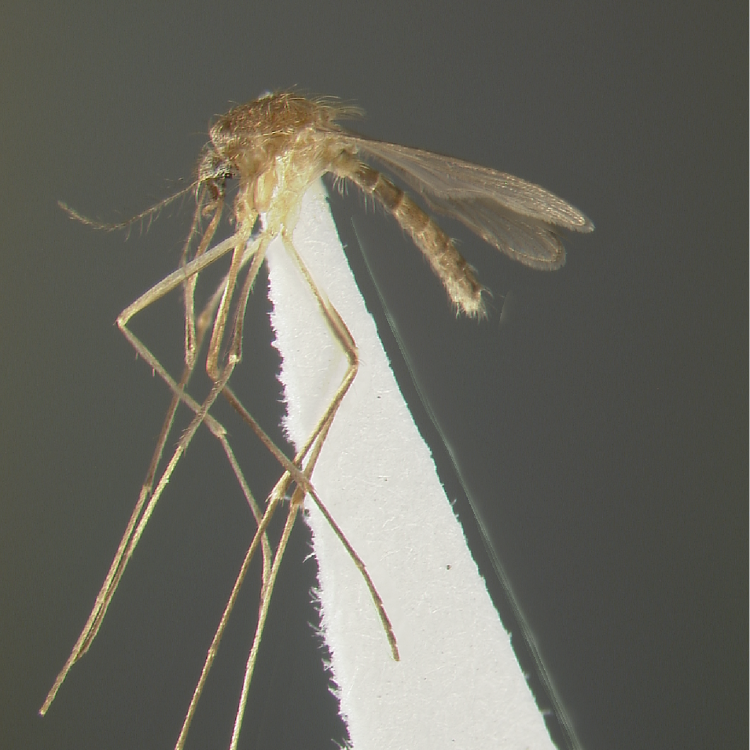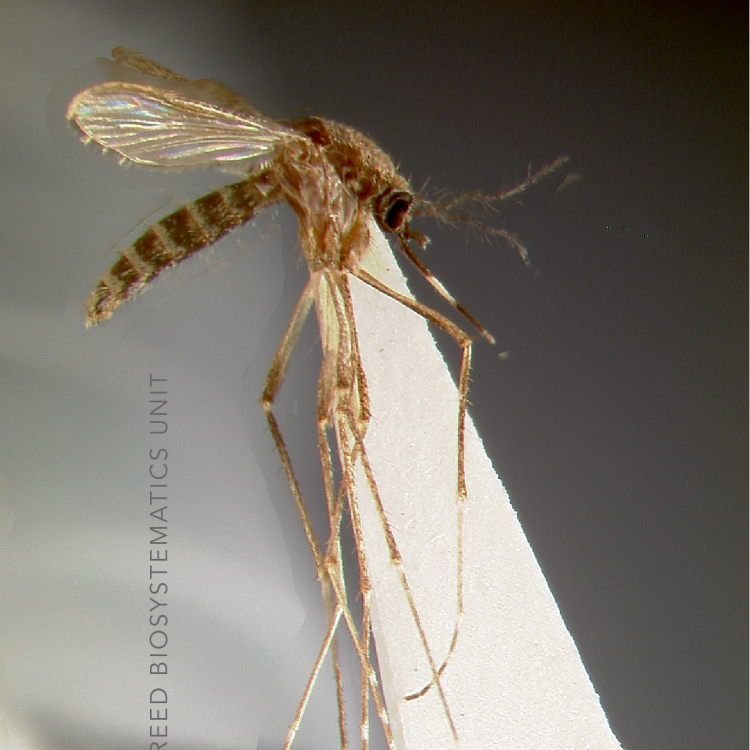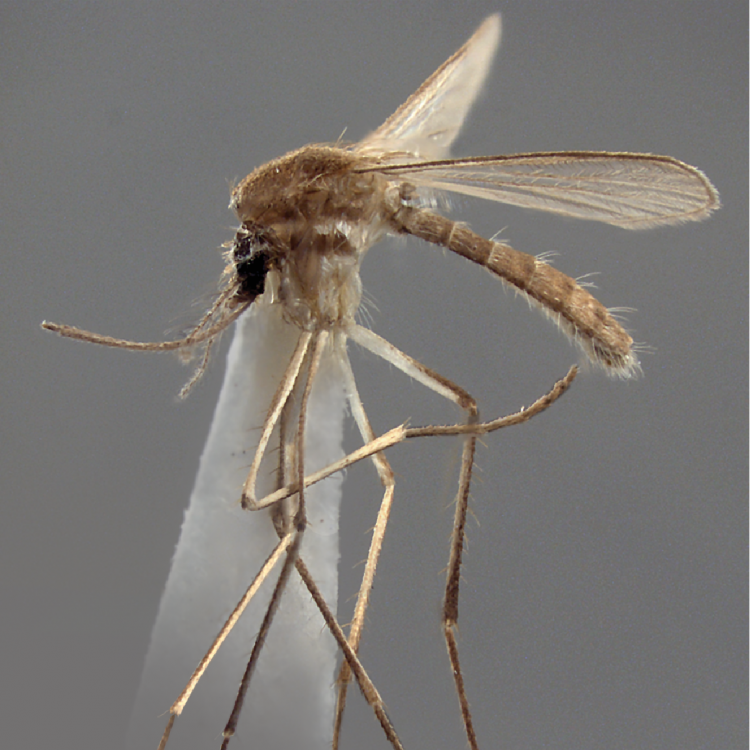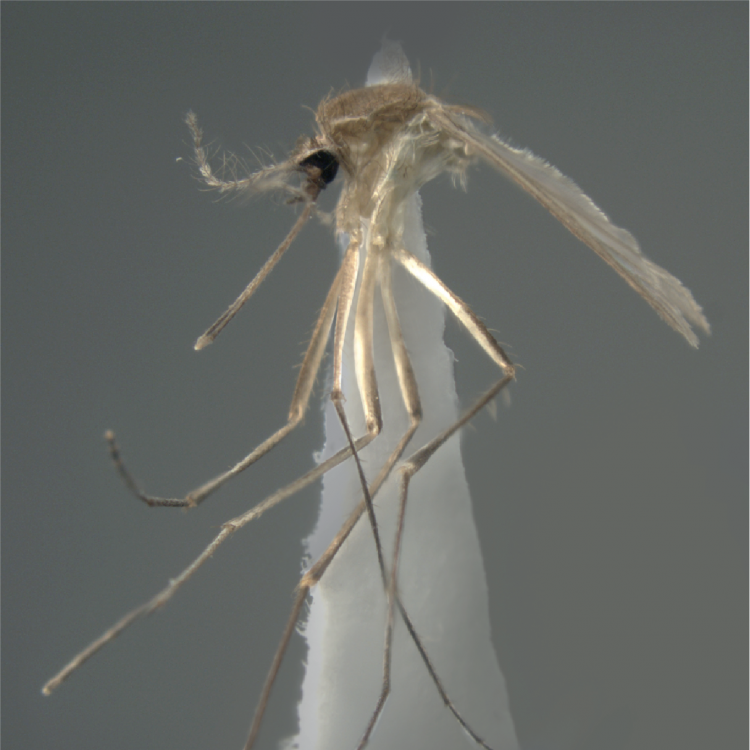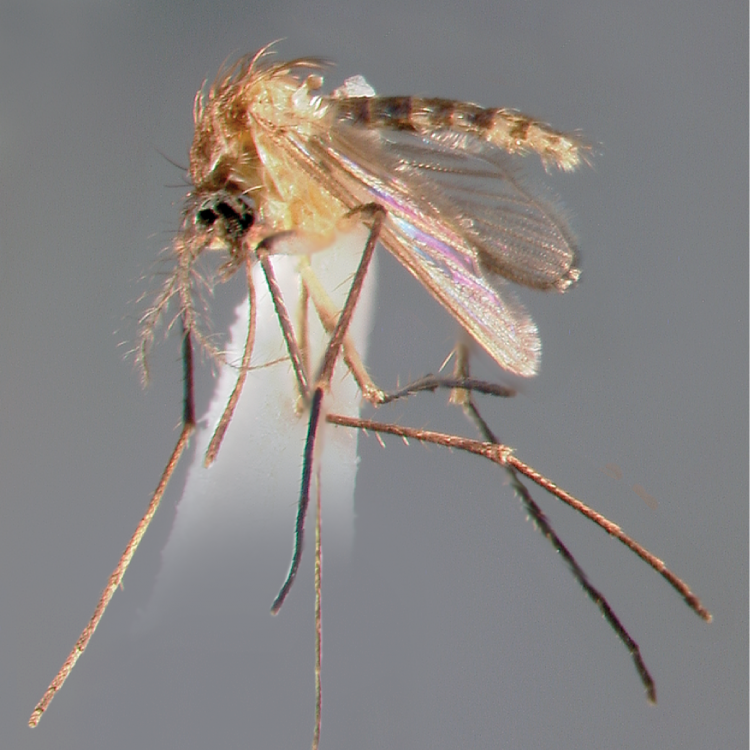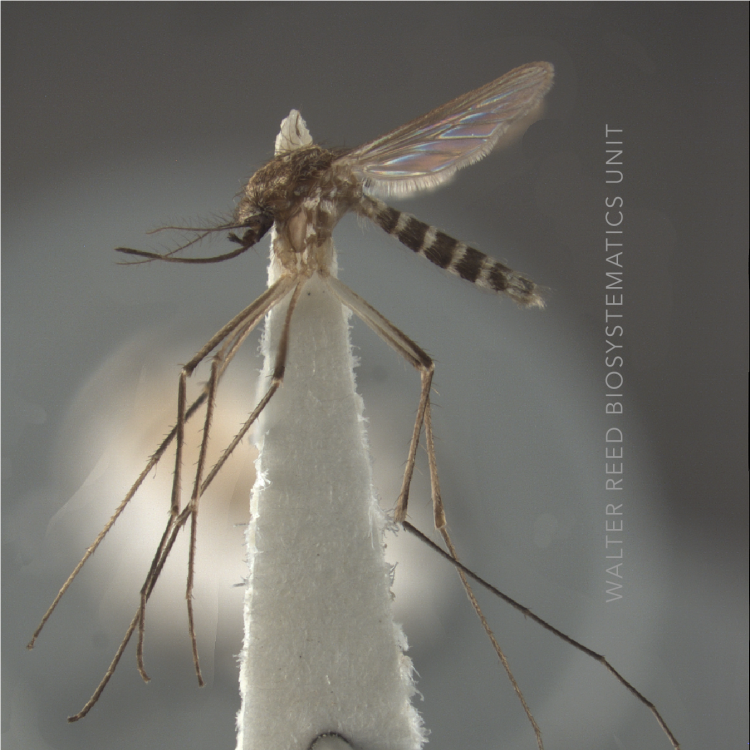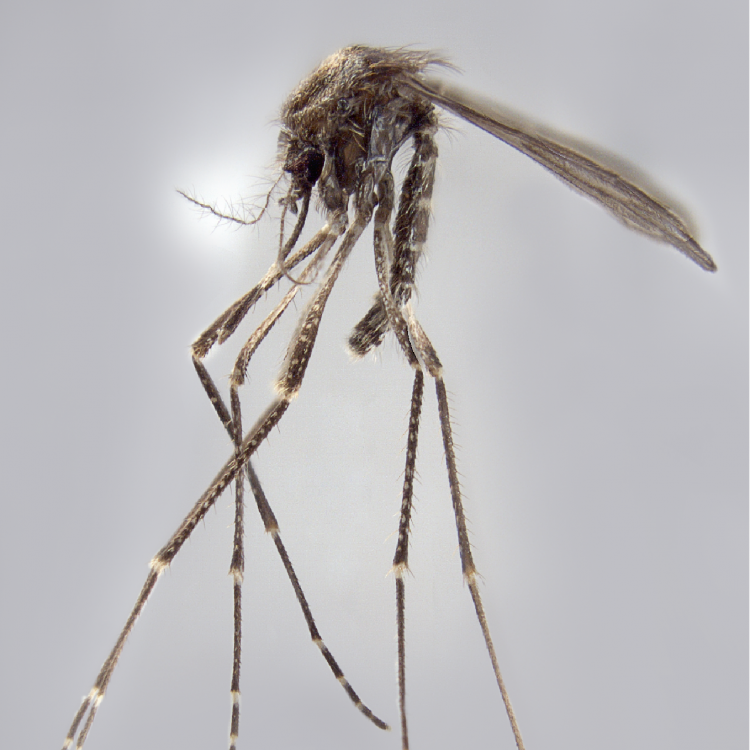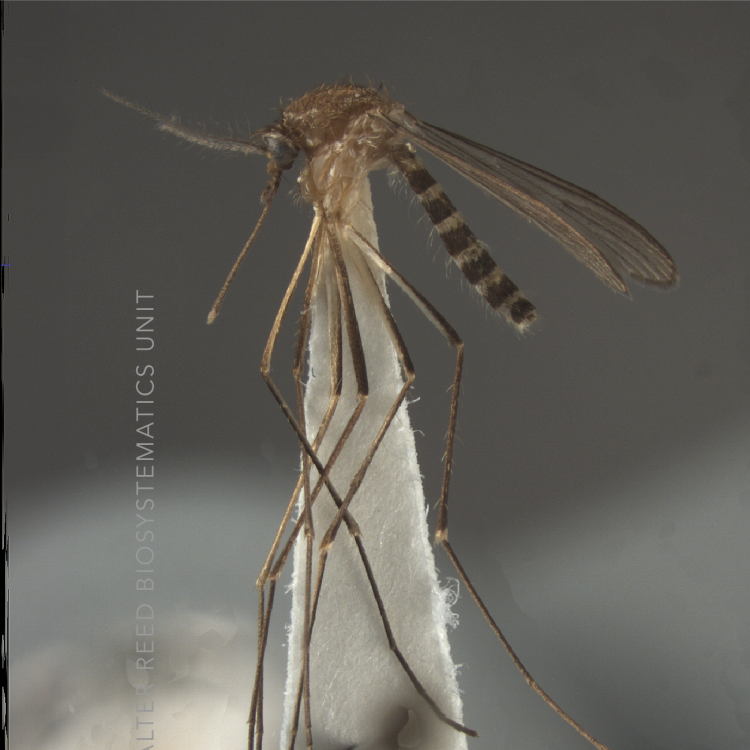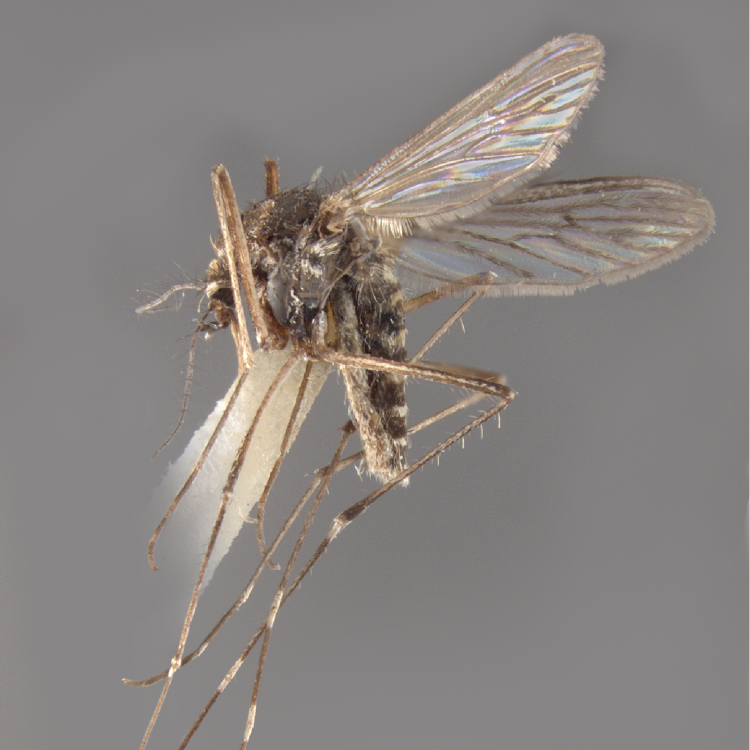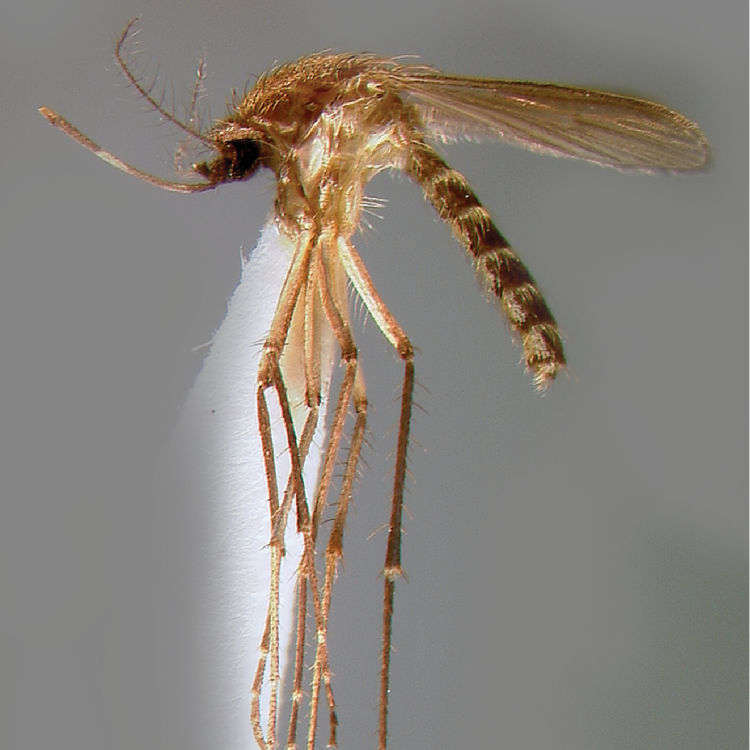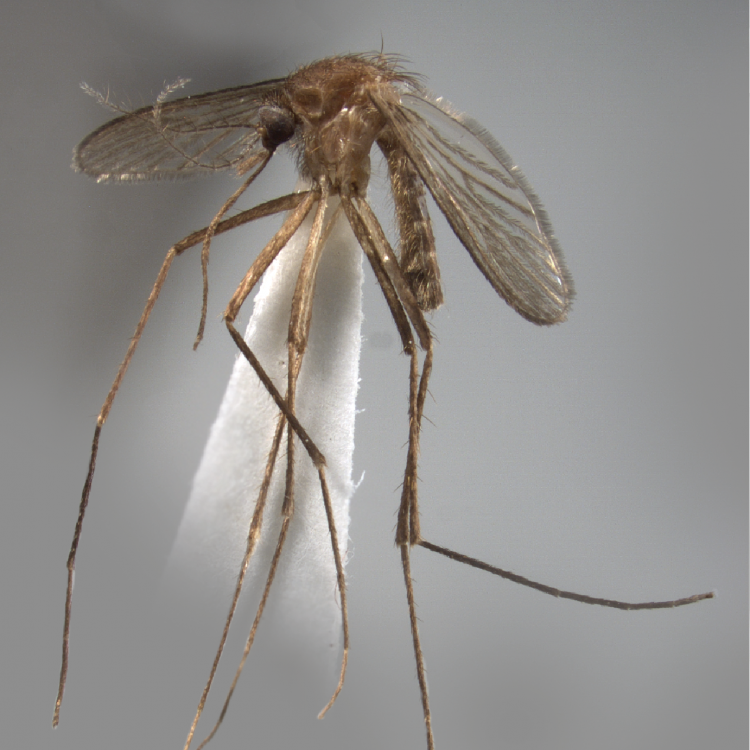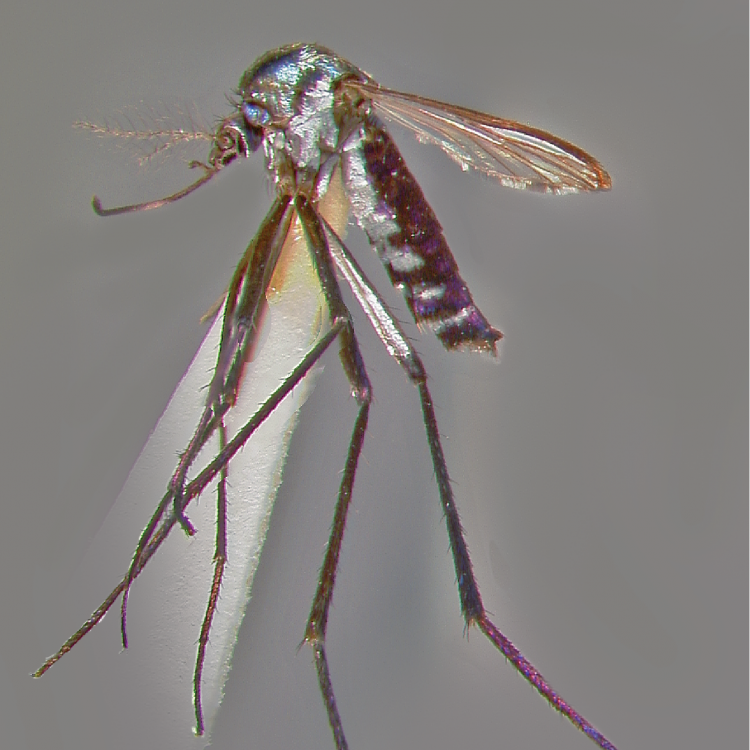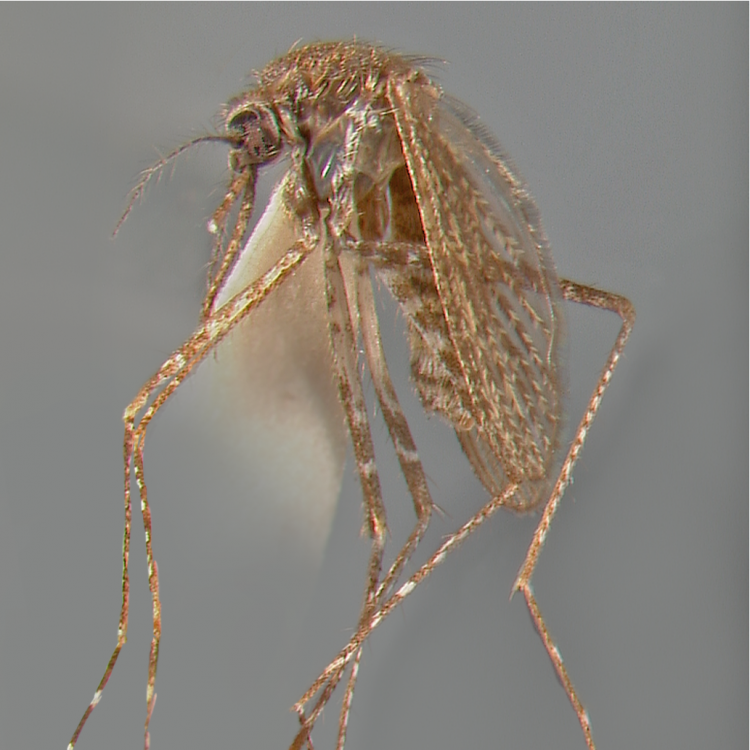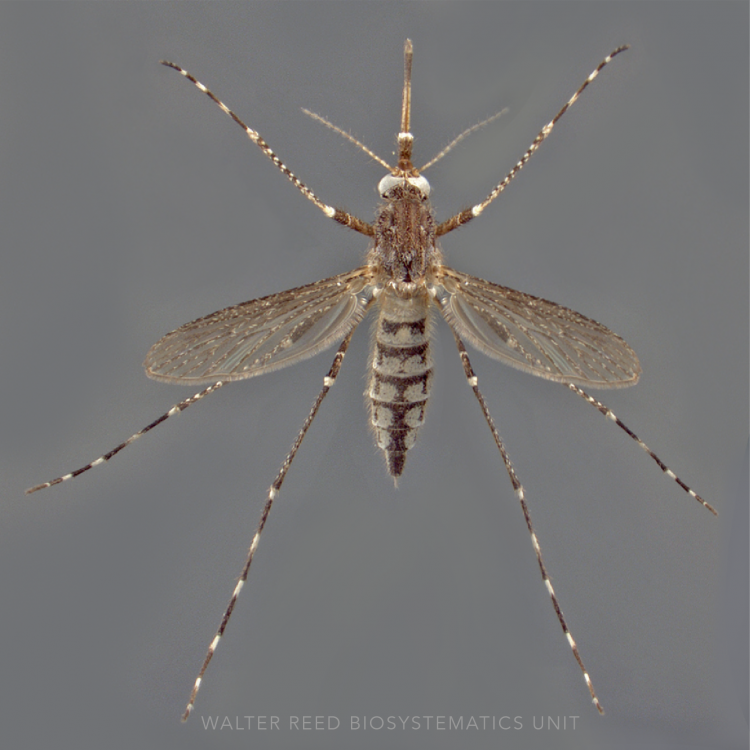ORIENTAL REGION
Etymology: not stated [spotted, variegated? (L, Gr)]
Aedes poicilius is a very attractive mosquito, with a distinctly spotted appearance—its legs have an abundance of contrasting white bands of different sizes, its wings are heavily spotted and the proboscis has a broad median band and a white tip. It is one of 36 species comprising the subgenus Finlaya, where several member species, including Ae. kochi (Dönitz) and Ae. fijiensis Marks are significant vectors of filariasis.
Type locality: Pulau Jerezak, Penang, Malaya [Malaysia]
Type depository: Natural History Museum, London, England, United Kingdom (NHMUK)
DIAGNOSTIC CHARACTERS (Click photos to view; mouse over and click large photo to zoom in.)
ADULT (illustrated): Head: Vertex (with broad, flat scales; proboscis (P) with median pale band. Thorax: Postpronotal scales broad, flat; scutellar scales broad and flat. Wing: Regularly spotted. Legs: Fe-I–III with apical ventrolateral tufts; Ta-I–III1–5 mostly with apical pale bands.
LARVA (not illustrated): Head: Abdominal segments: Thorax: Seta 0-P large, stellate. Abdomen: Seta 12-I present. Terminal segments: Comb scales numerous, arranged in triangular patch; pecten spines long and narrow; seta 1-S branched; saddle with long marginal spicules; siphon long; siphon index ≥2.0.
TAXONOMIC KEYS
Lee et al. 1982
Rattanarithikul et al. 2010
![]()
WRBU – Aedes – Australasian Region – Larva
![]()
WRBU – Aedes – Oriental Region – Adult
![]()
WRBU – Aedes – Oriental Region – Larva
Exemplar DNA sequences
None
BIONOMICS
Immatures
Immature Ae. poicilius develop in a variety of crop plant leaf axils, including aroids, abaca (wild banana), banana, and pineapple, and they can become super-abundant in agricultural regions. Larvae and pupae survive the dry season in the small amounts of water and damp detritus held in the tighter upper leaf axils of the wild banana, thought to retain water longer and replenish small amounts of water through dew condensation. This dry season survival strategy is echoed by members of the Aedes (Stegomyia) simpsoni complex which occupy banana leaf axils in Africa.
Adults
Female Ae. poicilius can reach high densities near plantations and rapidly achieve pest status as they bite humans aggressively throughout the day and night, both indoors and out. Domestic cattle and water buffalo are also attacked. In rural parts of the Philippines, it is the dominant human-feeding mosquito and the principal vector of filariasis.
DISTRIBUTION NOTES
Borneo; Brunei, India, Indonesia, Malaysia, Myanmar, Nepal, Philippines, Thailand.
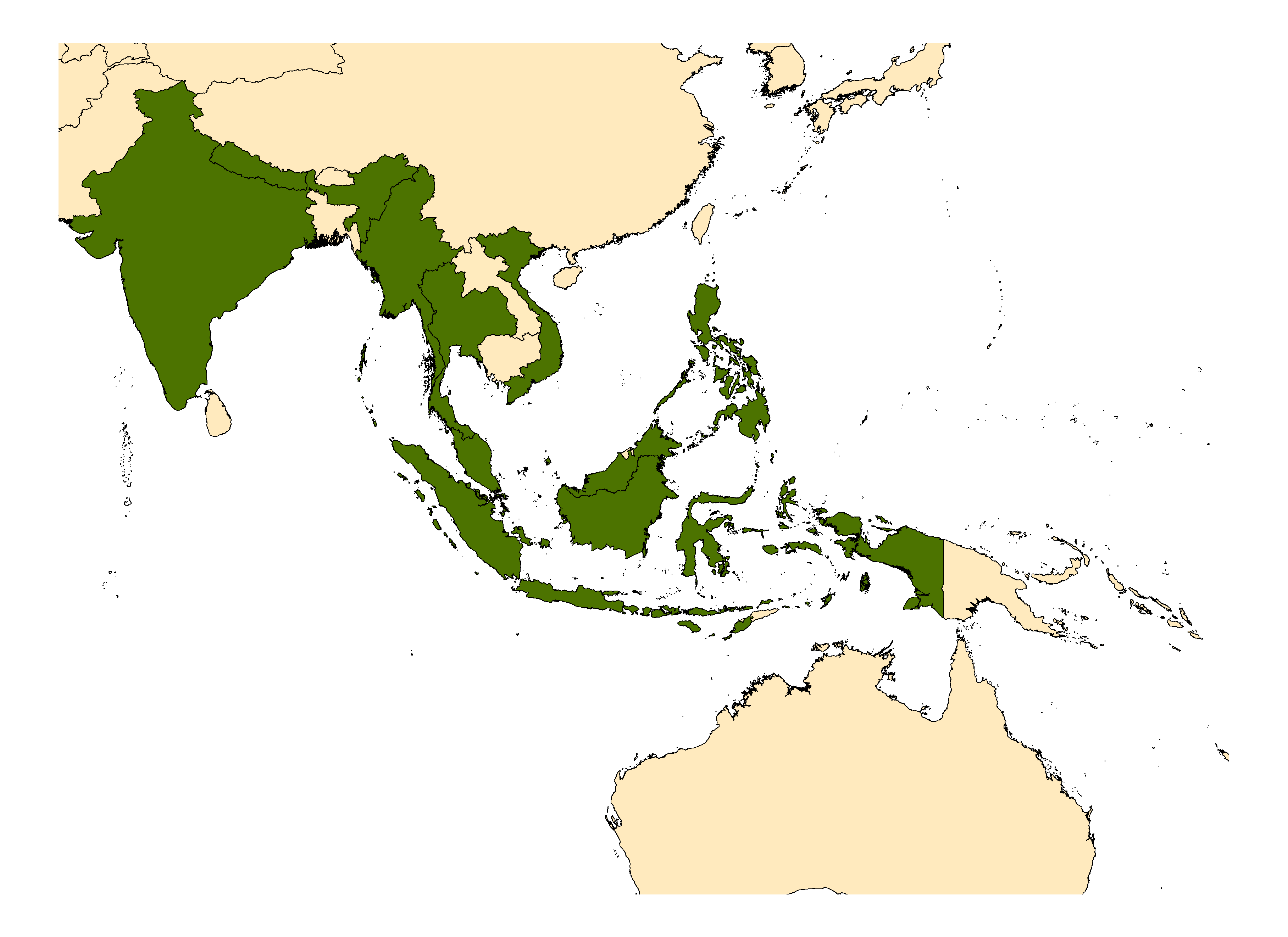
WRBU VECTOR HAZARD REPORTS
None; View other WRBU Vector Hazard Reports
Available GIS Models:
IMPORTANT REFERENCES (full citations below)
Theobald 1903a: 283 (F*; as Finlaya poicilia)
Bancroft 1908: 53 (F; as genus Finlaya)
Stone & Bohart 1944: 211 (M*)
Knight & Laffoon 1946: 221 (M*, F, P*, L*; taxonomy)
Knight & Hull 1951b: 231 (taxonomy)
Stone et al. 1959: 169 (as poecilus)
Mattingly 1971a: Pl. 32 (L thorax*)
Basio 1971b: 18 (M*, L*; bionomics)
Baisas 1974: 20 (M, F, P, L; taxonomy, bionomics, distribution; Philippines)
Lien et al. 1977 (distribution)
Lee et al. 1982: 231 (F key, taxonomy, bionomics, distribution, review)
Darsie et al. 1992 (distribution; Nepal)
Rattanarithikul et al. 2010 (F*, L*; bionomics, keys, distribution; Thailand)
CURRENT SYNONYMS
None
CITED REFERENCES
Baisas, F. E. (1974). The mosquito fauna of Subic Bay Naval Reservation, Republic of the Philippines. San Francisco: Headquarters, First Medical Service Wing (PACAF), San Francisco.
Bancroft, T. L. (1908). List of the mosquitoes of Queensland, with the original descriptions and notes on the life-history of a number. Annals of the Queensland Museum, 8, 1–64.
Basio, R. G. (1971b). The mosquito fauna of the Philippines (Diptera, Culicidae). Manila: National Museum of the Philippines. 198pp.
Darsie, R.F., Pradhan, S.P., & Vaidya, R.G. (1992). Notes on the mosquitoes of Nepal. II. New species records from 1991 collections. Mosquito Systematics, 24, 23–28.
Knight, K.L., & Hull, W.B. (1951b). The Aedes mosquitoes of the Philippine Islands I. Keys to species. Subgenera Mucidus, Ochlerotatus, and Finlaya (Diptera, Culicidae). Pacific Science, 5, 211–251.
Knight, K.L., & Laffoon, J.L. (1946). The oriental species of the Aedes (Finlaya) kochi group (Diptera: Culicidae). Transactions of the American Entomological Society, 72, 203–225.
Lee, D.J., Hicks, M.M., Griffiths, M., Russell, R.C., & Marks, E.N. (1982). The Culicidae of the Australasian region. Volume 2. Commonwealth Department of Health, School of Public Health and Tropical Medicine Monograph Series, 2.
Mattingly, P.F. (1971a). Contributions to the mosquito fauna of Southeast Asia. XII. Illustrated keys to the genera of mosquitoes (Diptera, Culicidae). Contributions of the American Entomological Institute, 7(4), 1–84.
Rattanarithikul, R., Harbach, R.E., Harrison, B.A., Panthusiri, P., Coleman, R.E., & Richardson, J.H. (2010). Illustrated keys to the mosquitoes of Thailand VI. Tribe Aedini. Southeast Asian Journal of Tropical Medicine and Public Health, 41(1), 1–225.
Stone, A., & Bohart, R.M. (1944). Studies on mosquitoes from the Philippine Islands and Australasia (Diptera: Culicidae). Proceedings of the Entomological Society of Washington, 46, 205–225.
Stone, A., Knight, K.L., & Starcke, H. (1959). A synoptic catalog of the mosquitoes of the World (Diptera, Culicidae) (Vol. 6). Washington, D.C.: Entomological Society of America, The Thomas Say Foundation.
Theobald, F.V. (1903a). A monograph of the Culicidae of the World (Vol. 3). London: British Museum (Natural History). 359pp
CITE THIS PAGE
Walter Reed Biosystematics Unit (Year). Aedes poicillus species page. Walter Reed Biosystematics Unit Website, http://wrbu.si.edu/vectorspecies/mosquitoes/poicilius, accessed on [date (e.g. 03 February 2020) when you last viewed the site].


